Road signs in New Zealand
Road signs in New Zealand are similar to those set by the Vienna Convention on Road Signs and Signals. While New Zealand is not a signatory to the convention, its road signs are generally close in shape and function. New Zealand uses yellow diamond-shaped signs for warnings in common with Australia, the Americas, Ireland, Japan and Thailand. Speed limit signs are a red circle with a white background and the limitation in black, and are in kilometres per hour. There are also some signs unique to New Zealand. Road signs in New Zealand are controlled by the NZ Transport Agency and are prescribed in the Land Transport Rule: Traffic Control Devices 2004 and set out in the Traffic Control Devices (TCD) Manual.[1]
Most of these signs were only introduced in 1987, replacing older-style signs with white text on black backgrounds - square with a red border for regulatory signs and diamond with a yellow border. The only signs that remained the same were the Stop sign and the speed limit sign (although the "km/h" legend from metrication was removed). Some of these signs can still be seen on some rural roads. New Zealand drives on the left.
Regulatory
Speed limits are posted in multiples of 10 kilometres per hour [km/h] (6.2 mph), and range from 10–110 km/h (6–68 mph), with 110 km/h being the maximum legal speed for motor vehicles in New Zealand. The Manual of Traffic Signs and Markings specifies that advisory speeds (PW-25) always end in digit "5", however there are some advisory speed signs that do not comply with the Manual and end in zero.[2]
.svg.png.webp) (R1-1) 10 km/h speed limit
(R1-1) 10 km/h speed limit.svg.png.webp) (R1-1) 20 km/h speed limit
(R1-1) 20 km/h speed limit.svg.png.webp) (R1-1) 30 km/h speed limit
(R1-1) 30 km/h speed limit.svg.png.webp) (R1-1) 40 km/h speed limit
(R1-1) 40 km/h speed limit.svg.png.webp) (R1-1) 50 km/h speed limit
(R1-1) 50 km/h speed limit.svg.png.webp) (R1-1) 60 km/h speed limit
(R1-1) 60 km/h speed limit.svg.png.webp) (R1-1) 70 km/h speed limit
(R1-1) 70 km/h speed limit.svg.png.webp) (R1-1) 80 km/h speed limit
(R1-1) 80 km/h speed limit.svg.png.webp) (R1-1) 90 km/h speed limit
(R1-1) 90 km/h speed limit (R1-1.1) 100 km/h speed limit
(R1-1.1) 100 km/h speed limit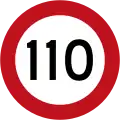 (R1-1.2) 110km/h speed limit
(R1-1.2) 110km/h speed limit.svg.png.webp) (R1-2) 60 km/h variable speed limit
(R1-2) 60 km/h variable speed limit.svg.png.webp) (R1-2.1) 60 km/h variable speed limit
(R1-2.1) 60 km/h variable speed limit (R1-3) Speed Limit Derestriction (no posted speed limit, maximum of 100 km/h applies but drive to conditions)
(R1-3) Speed Limit Derestriction (no posted speed limit, maximum of 100 km/h applies but drive to conditions) (R1-6) 40 km/h school zone speed limit in effect when flashing
(R1-6) 40 km/h school zone speed limit in effect when flashing (R1-6.1) 40 km/h school zone speed limit in effect during times specified
(R1-6.1) 40 km/h school zone speed limit in effect during times specified (R1-8) Temporary sign (added to speed limit signs to indicate the limit is only temporary)
(R1-8) Temporary sign (added to speed limit signs to indicate the limit is only temporary) (R1-8.1) Temporary sign (added to speed limit signs to indicate the limit is only temporary)
(R1-8.1) Temporary sign (added to speed limit signs to indicate the limit is only temporary).svg.png.webp) (R1-8.1) 10 km/h speed limit
(R1-8.1) 10 km/h speed limit.svg.png.webp) (R1-8.1) 20 km/h speed limit
(R1-8.1) 20 km/h speed limit.svg.png.webp) (R1-8.1) 30 km/h speed limit
(R1-8.1) 30 km/h speed limit.svg.png.webp) (R1-8.1) 40 km/h speed limit
(R1-8.1) 40 km/h speed limit.svg.png.webp) (R1-8.1) 50 km/h speed limit
(R1-8.1) 50 km/h speed limit.svg.png.webp) (R1-8.1) 60 km/h speed limit
(R1-8.1) 60 km/h speed limit.svg.png.webp) (R1-8.1) 70 km/h speed limit
(R1-8.1) 70 km/h speed limit.svg.png.webp) (R1-8.1) 80 km/h speed limit
(R1-8.1) 80 km/h speed limit.svg.png.webp) (R1-8.1) 90 km/h speed limit
(R1-8.1) 90 km/h speed limit (R2-1) Stop
(R2-1) Stop (R2-2) Give Way
(R2-2) Give Way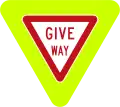 (R2-2) Fluorescent version
(R2-2) Fluorescent version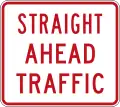 (R2-2.2) Straight Ahead Traffic (added to R2-2)
(R2-2.2) Straight Ahead Traffic (added to R2-2) (R2-2.3) Right Turning Traffic (added to R2-2)
(R2-2.3) Right Turning Traffic (added to R2-2)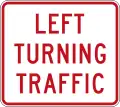 (R2-2.4) Left Turning Traffic (added to R2-2)
(R2-2.4) Left Turning Traffic (added to R2-2) (R2-2.5) To Cyclists (added to R2-2)
(R2-2.5) To Cyclists (added to R2-2) (R2-2.6) To Cyclists and Pedestrians (added to R2-2)
(R2-2.6) To Cyclists and Pedestrians (added to R2-2)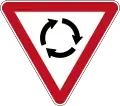 (R2-3) Give Way at Roundabout (give way to vehicles coming from the right)
(R2-3) Give Way at Roundabout (give way to vehicles coming from the right)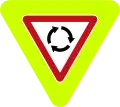 (R2-3) Fluorescent version
(R2-3) Fluorescent version (R2-4) School Patrol Stop (used by crossing wardens when children are crossing the street, vehicles must stop)
(R2-4) School Patrol Stop (used by crossing wardens when children are crossing the street, vehicles must stop).svg.png.webp) (R2-4) Perforated version
(R2-4) Perforated version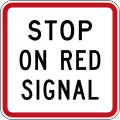 (R2-6) Stop on Red Signal
(R2-6) Stop on Red Signal (R2-6.2) Stop Here on Red Signal
(R2-6.2) Stop Here on Red Signal (R2-7) Give Way to Oncoming Vehicles (used at traffic bottleneck points)
(R2-7) Give Way to Oncoming Vehicles (used at traffic bottleneck points) (R2-7.1) Give Way (added to R2-7) (used at traffic bottleneck points)
(R2-7.1) Give Way (added to R2-7) (used at traffic bottleneck points) (R2-8) Priority Over Oncoming Vehicles (used at traffic bottleneck points)
(R2-8) Priority Over Oncoming Vehicles (used at traffic bottleneck points) (R2-9) Turning Traffic Give Way To Pedestrians
(R2-9) Turning Traffic Give Way To Pedestrians (R2-9.1) Turning Traffic Give Way To Cyclists
(R2-9.1) Turning Traffic Give Way To Cyclists (R2-9.2) Straight Ahead Traffic Give Way To Cyclists
(R2-9.2) Straight Ahead Traffic Give Way To Cyclists (R2-10) One Vehicle per Green each lane
(R2-10) One Vehicle per Green each lane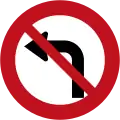 (R3-1) No Left Turn
(R3-1) No Left Turn (R3-2) No Right Turn
(R3-2) No Right Turn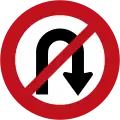 (R3-3) No U-turn
(R3-3) No U-turn (R3-4) No Entry (do not enter from this point)
(R3-4) No Entry (do not enter from this point) (R3-5.1) Except Buses
(R3-5.1) Except Buses (R3-5.2) Except Cycles
(R3-5.2) Except Cycles (R3-5.1) Except Authorised Vehicles
(R3-5.1) Except Authorised Vehicles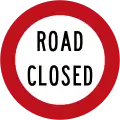 (R3-6) Road Closed
(R3-6) Road Closed (R3-7) Wrong Way
(R3-7) Wrong Way (R3-7.1) Wrong Way - Go Back
(R3-7.1) Wrong Way - Go Back (R3-8) Turn Left
(R3-8) Turn Left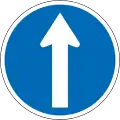 (R3-9) Proceed Straight Ahead (no turns allowed)
(R3-9) Proceed Straight Ahead (no turns allowed) (R3-10) Turn Right
(R3-10) Turn Right (R3-11) Turn Left or Right
(R3-11) Turn Left or Right (R3-12) One-way traffic (pointing left)
(R3-12) One-way traffic (pointing left) (R3-12) One-way traffic (pointing right)
(R3-12) One-way traffic (pointing right)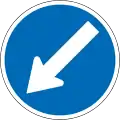 (R3-13) Keep Left
(R3-13) Keep Left (R3-13.1) Keep Left (narrow version)
(R3-13.1) Keep Left (narrow version) (R3-13.2) Keep Right
(R3-13.2) Keep Right (R3-13.3) Keep Right (narrow version)
(R3-13.3) Keep Right (narrow version) (R4-1) This Lane Must Turn Left
(R4-1) This Lane Must Turn Left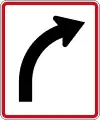 (R4-1) This Lane Must Turn Right
(R4-1) This Lane Must Turn Right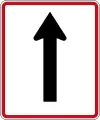 (R4-2) This Lane Must Proceed Straight
(R4-2) This Lane Must Proceed Straight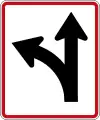 (R4-3) This Lane May Proceed Straight or Turn Left
(R4-3) This Lane May Proceed Straight or Turn Left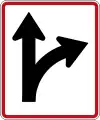 (R4-3) This Lane May Proceed Straight or Turn Right
(R4-3) This Lane May Proceed Straight or Turn Right (R4-7) Bus Lane
(R4-7) Bus Lane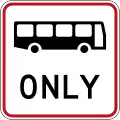 (R4-7.1) Buses Only
(R4-7.1) Buses Only.svg.png.webp) (R4-8.4) Transit Lane ends
(R4-8.4) Transit Lane ends.svg.png.webp) (R4-8.4) Transit Lane ends
(R4-8.4) Transit Lane ends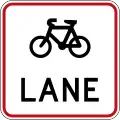 (R4-9) Cycllist Lane
(R4-9) Cycllist Lane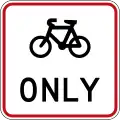 (R4-9.1) Cyclists Only
(R4-9.1) Cyclists Only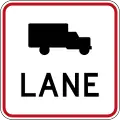 (R4-10) Heavy Vehicle Lane
(R4-10) Heavy Vehicle Lane (R4-11) Shared Cyclists and Pedestrian Path
(R4-11) Shared Cyclists and Pedestrian Path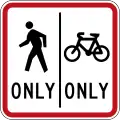 (R4-11.1) Cyclists and Pedestrians Maintain Sides
(R4-11.1) Cyclists and Pedestrians Maintain Sides (R4-11.2) Cyclists and Pedestrians Maintain Sides
(R4-11.2) Cyclists and Pedestrians Maintain Sides (R4-12) Emergency Stopping Lane Only
(R4-12) Emergency Stopping Lane Only (R4-12.1) Emergency Stopping Lane Only during times specified
(R4-12.1) Emergency Stopping Lane Only during times specified (R4-12.2) Emergency Stopping Lane
(R4-12.2) Emergency Stopping Lane.svg.png.webp) (R4-13) Signal bypass transit lane for vehicles carrying 2 or more persons and heavy vehicles exceeding 3500 kilograms
(R4-13) Signal bypass transit lane for vehicles carrying 2 or more persons and heavy vehicles exceeding 3500 kilograms.svg.png.webp) (R4-13) Signal bypass transit lane for vehicles carrying 3 or more persons and heavy vehicles exceeding 3500 kilograms
(R4-13) Signal bypass transit lane for vehicles carrying 3 or more persons and heavy vehicles exceeding 3500 kilograms.svg.png.webp) (R4-13.1) Signal bypass transit lane for vehicles carrying 2 or more persons and heavy vehicles exceeding 3500 kilograms
(R4-13.1) Signal bypass transit lane for vehicles carrying 2 or more persons and heavy vehicles exceeding 3500 kilograms.svg.png.webp) (R4-13.1) Signal bypass transit lane for vehicles carrying 3 or more persons and heavy vehicles exceeding 3500 kilograms
(R4-13.1) Signal bypass transit lane for vehicles carrying 3 or more persons and heavy vehicles exceeding 3500 kilograms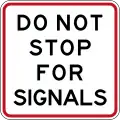 (R4-13.2) Do not Stop for Signals
(R4-13.2) Do not Stop for Signals (R4-13.3a) Signals do not apply
(R4-13.3a) Signals do not apply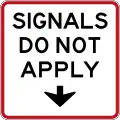 (R4-13.3b) Signals do not apply
(R4-13.3b) Signals do not apply (R4-14) Bus and Electric Vehicle Lane
(R4-14) Bus and Electric Vehicle Lane (R4-14.1) Buses and Electric Vehicles Only
(R4-14.1) Buses and Electric Vehicles Only (R4-14.2) Transit lane for vehicles carrying 2 or more persons and electric vehicles irrespective of the number of persons in the vehicle
(R4-14.2) Transit lane for vehicles carrying 2 or more persons and electric vehicles irrespective of the number of persons in the vehicle (R4-14.3) Transit lane for vehicles carrying 3 or more persons and electric vehicles irrespective of the number of persons in the vehicle
(R4-14.3) Transit lane for vehicles carrying 3 or more persons and electric vehicles irrespective of the number of persons in the vehicle (R4-14.4) Transit lane for vehicles carrying 2 or more persons, heavy vehicles exceeding 3500 kilograms and electric vehicles irrespective of the number of persons in the vehicle
(R4-14.4) Transit lane for vehicles carrying 2 or more persons, heavy vehicles exceeding 3500 kilograms and electric vehicles irrespective of the number of persons in the vehicle (R4-14.5) Transit lane for vehicles carrying 3 or more persons, heavy vehicles exceeding 3500 kilograms and electric vehicles irrespective of the number of persons in the vehicle
(R4-14.5) Transit lane for vehicles carrying 3 or more persons, heavy vehicles exceeding 3500 kilograms and electric vehicles irrespective of the number of persons in the vehicle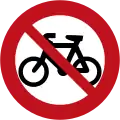 (R5-1) No Cyclists or Mopeds
(R5-1) No Cyclists or Mopeds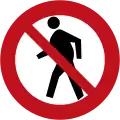 (R5-2) No Pedestrians
(R5-2) No Pedestrians (R5-3) No Heavy Vehicles
(R5-3) No Heavy Vehicles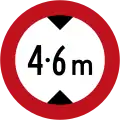 (R5-4.1) Maximum Height Restriction
(R5-4.1) Maximum Height Restriction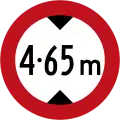 (R5-4.2) Maximum Height Restriction
(R5-4.2) Maximum Height Restriction (R5-5) Pedestrians Only (marks a pedestrian zone where motor vehicles are prohibited)
(R5-5) Pedestrians Only (marks a pedestrian zone where motor vehicles are prohibited) (R5-6) Cycles Must Exit
(R5-6) Cycles Must Exit (R5-7) Class C road (Heavy vehicles can drive on this road only to deliver or collect goods or passengers along the road)
(R5-7) Class C road (Heavy vehicles can drive on this road only to deliver or collect goods or passengers along the road) (R5-7.1) Class I road
(R5-7.1) Class I road (R5-7.2) Class I road until date specified
(R5-7.2) Class I road until date specified (R5-8) Maximum Length for Heavy Vehicles
(R5-8) Maximum Length for Heavy Vehicles (R5-10) Heavy vehicle axle weight limit
(R5-10) Heavy vehicle axle weight limit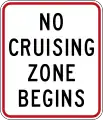 (R5-13A) No cruising zone
(R5-13A) No cruising zone (R5-13.1A) No cruising zone begins
(R5-13.1A) No cruising zone begins (R5-13.2A) No cruising zone ends
(R5-13.2A) No cruising zone ends.svg.png.webp) (R7-1) Keep Left Unless Passing
(R7-1) Keep Left Unless Passing.svg.png.webp) (R7-1) Keep Left Unless Passing
(R7-1) Keep Left Unless Passing.svg.png.webp) (R7-1) Keep Left Unless Passing
(R7-1) Keep Left Unless Passing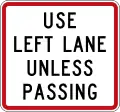 (R7-1.1) Use Left Lane Unless Passing
(R7-1.1) Use Left Lane Unless Passing (R7-2) Regulatory sign effective ahead
(R7-2) Regulatory sign effective ahead (R7-2.1) Regulatory sign effective begins
(R7-2.1) Regulatory sign effective begins (R7-2.2) Regulatory sign effective ends
(R7-2.2) Regulatory sign effective ends.svg.png.webp) (R7-2.1) Regulatory sign effective in 100 metres
(R7-2.1) Regulatory sign effective in 100 metres.svg.png.webp) (R7-2.2) Regulatory sign effective in 200 metres
(R7-2.2) Regulatory sign effective in 200 metres.svg.png.webp) (R7-2.3) Regulatory sign effective in 300 metres
(R7-2.3) Regulatory sign effective in 300 metres
Parking
 (R6-10.1) No Stopping
(R6-10.1) No Stopping (R6-10.1) No Stopping (on the left of this sign)
(R6-10.1) No Stopping (on the left of this sign) (R6-10.1) No Stopping (on the right of this sign)
(R6-10.1) No Stopping (on the right of this sign) (R6-10.1) No Stopping (on both sides of this sign)
(R6-10.1) No Stopping (on both sides of this sign) (RP-1.1) No Stopping (on the left of this sign)
(RP-1.1) No Stopping (on the left of this sign) (RP-1.1) No Stopping (on the right of this sign)
(RP-1.1) No Stopping (on the right of this sign) (RP-1.1) No Stopping (on both sides of this sign)
(RP-1.1) No Stopping (on both sides of this sign).svg.png.webp) (R6-10.2) No Stopping for 1 kilometre
(R6-10.2) No Stopping for 1 kilometre.svg.png.webp) (R6-10.2) No Stopping for 2 kilometres
(R6-10.2) No Stopping for 2 kilometres.svg.png.webp) (R6-10.2) No Stopping for 3 kilometres
(R6-10.2) No Stopping for 3 kilometres.svg.png.webp) (R6-10.2) No Stopping for 4 kilometres
(R6-10.2) No Stopping for 4 kilometres.svg.png.webp) (R6-10.2) No Stopping for 5 kilometres
(R6-10.2) No Stopping for 5 kilometres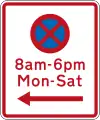 (R6-11) No Stopping at times prescribed (on the left of this sign)
(R6-11) No Stopping at times prescribed (on the left of this sign) (R6-11) No Stopping at times prescribed (on the right of this sign)
(R6-11) No Stopping at times prescribed (on the right of this sign)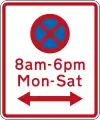 (R6-11) No Stopping at times prescribed (on both sides of this sign)
(R6-11) No Stopping at times prescribed (on both sides of this sign) (R6-11.1) Late Night Extension (added to R6-11)
(R6-11.1) Late Night Extension (added to R6-11) (R6-12.1) Clearway (No Stopping) (with single peak time)
(R6-12.1) Clearway (No Stopping) (with single peak time) (R6-12.2) Clearway (No Stopping) (with two peak times)
(R6-12.2) Clearway (No Stopping) (with two peak times) (R6-12.3) Clearway (No Stopping) during times specified
(R6-12.3) Clearway (No Stopping) during times specified (R6-12.4) Clearway Begins
(R6-12.4) Clearway Begins (R6-12.5) Clearway Ends
(R6-12.5) Clearway Ends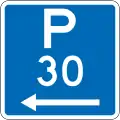 (R6-30) Parking Permitted: 30 Minutes (on the left of this sign, standard hours)
(R6-30) Parking Permitted: 30 Minutes (on the left of this sign, standard hours) (R6-30) Parking Permitted: 30 Minutes (on the right of this sign, standard hours)
(R6-30) Parking Permitted: 30 Minutes (on the right of this sign, standard hours)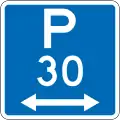 (R6-30) Parking Permitted: 30 Minutes (on both sides of this sign, standard hours)
(R6-30) Parking Permitted: 30 Minutes (on both sides of this sign, standard hours)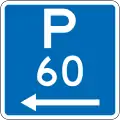 (R6-30) Parking Permitted: 60 Minutes (on the left of this sign, standard hours)
(R6-30) Parking Permitted: 60 Minutes (on the left of this sign, standard hours) (R6-30) Parking Permitted: 60 Minutes (on the right of this sign, standard hours)
(R6-30) Parking Permitted: 60 Minutes (on the right of this sign, standard hours)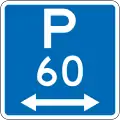 (R6-30) Parking Permitted: 60 Minutes (on the both sides of this sign, standard hours)
(R6-30) Parking Permitted: 60 Minutes (on the both sides of this sign, standard hours)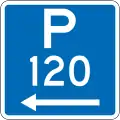 (R6-30) Parking Permitted: 120 Minutes (on the left of this sign, standard hours)
(R6-30) Parking Permitted: 120 Minutes (on the left of this sign, standard hours)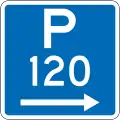 (R6-30) Parking Permitted: 120 Minutes (on the right of this sign, standard hours)
(R6-30) Parking Permitted: 120 Minutes (on the right of this sign, standard hours)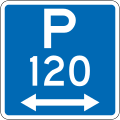 (R6-30) Parking Permitted: 120 Minutes (on both sides of this sign, standard hours)
(R6-30) Parking Permitted: 120 Minutes (on both sides of this sign, standard hours) (R6-30.1) Late Night Extension
(R6-30.1) Late Night Extension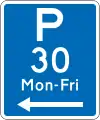 (R6-31) Parking Permitted: 30 Minutes (on the left of this sign, non-standard hours)
(R6-31) Parking Permitted: 30 Minutes (on the left of this sign, non-standard hours)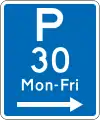 (R6-31) Parking Permitted: 30 Minutes (on the right of this sign, non-standard hours)
(R6-31) Parking Permitted: 30 Minutes (on the right of this sign, non-standard hours)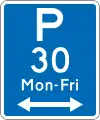 (R6-31) Parking Permitted: 30 Minutes (on both sides of this sign, non-standard hours)
(R6-31) Parking Permitted: 30 Minutes (on both sides of this sign, non-standard hours) (R6-32) Parking Permitted: 30 Minutes (on the left of this sign, other times)
(R6-32) Parking Permitted: 30 Minutes (on the left of this sign, other times) (R6-32) Parking Permitted: 30 Minutes (on the right of this sign, other times)
(R6-32) Parking Permitted: 30 Minutes (on the right of this sign, other times)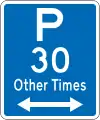 (R6-32) Parking Permitted: 30 Minutes (on both sides of this sign, other times)
(R6-32) Parking Permitted: 30 Minutes (on both sides of this sign, other times) (R6-50.1) Good Vehicles Only
(R6-50.1) Good Vehicles Only (R6-50.2) 5 Minute Maximum, Goods Vehicles Only
(R6-50.2) 5 Minute Maximum, Goods Vehicles Only (R6-50.5) Loading Zone Parking: 5 Minutes
(R6-50.5) Loading Zone Parking: 5 Minutes (R6-50.5) Loading Zone Parking: 5 Minutes (on the left of this sign)
(R6-50.5) Loading Zone Parking: 5 Minutes (on the left of this sign)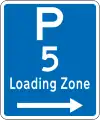 (R6-50.5) Loading Zone Parking: 5 Minutes (on the right of this sign)
(R6-50.5) Loading Zone Parking: 5 Minutes (on the right of this sign)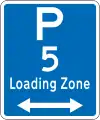 (R6-50.5) Loading Zone Parking: 5 Minutes (on both sides of this sign)
(R6-50.5) Loading Zone Parking: 5 Minutes (on both sides of this sign) (R6-51) Motorcycle Parking
(R6-51) Motorcycle Parking (R6-51.1) Motorcycle Parking (on the left of this sign)
(R6-51.1) Motorcycle Parking (on the left of this sign)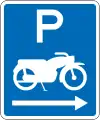 (R6-51.1) Motorcycle Parking (on the right of this sign)
(R6-51.1) Motorcycle Parking (on the right of this sign)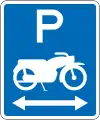 (R6-51.1) Motorcycle Parking (on both sides of this sign)
(R6-51.1) Motorcycle Parking (on both sides of this sign)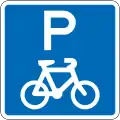 (R6-52) Cyclists Parking
(R6-52) Cyclists Parking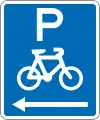 (R6-52.1) Cyclists Parking (on the left of this sign)
(R6-52.1) Cyclists Parking (on the left of this sign)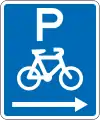 (R6-52.1) Cyclists Parking (on the right of this sign)
(R6-52.1) Cyclists Parking (on the right of this sign)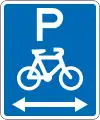 (R6-52.1) Cyclists Parking (on both sides of this sign)
(R6-52.1) Cyclists Parking (on both sides of this sign) (R6-53) Bus Parking: No Limit
(R6-53) Bus Parking: No Limit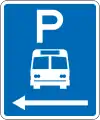 (R6-53.1) Bus Parking: No Limit (on the left of this sign)
(R6-53.1) Bus Parking: No Limit (on the left of this sign) (R6-53.1) Bus Parking: No Limit (on the right of this sign)
(R6-53.1) Bus Parking: No Limit (on the right of this sign)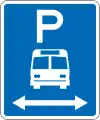 (R6-53.1) Bus Parking: No Limit (on both sides of this sign)
(R6-53.1) Bus Parking: No Limit (on both sides of this sign) (R6-53.2.1) Bus Parking: Time Limit
(R6-53.2.1) Bus Parking: Time Limit (R6-53.2.1) Bus Parking: Time Limit (on the left of this sign)
(R6-53.2.1) Bus Parking: Time Limit (on the left of this sign) (R6-53.2.1) Bus Parking: Time Limit (on the right of this sign)
(R6-53.2.1) Bus Parking: Time Limit (on the right of this sign) (R6-53.2.1) Bus Parking: Time Limit (on both sides of this sign)
(R6-53.2.1) Bus Parking: Time Limit (on both sides of this sign) (R6-53.2.2) Bus Parking: Non-standard Hours (on the left of this sign)
(R6-53.2.2) Bus Parking: Non-standard Hours (on the left of this sign) (R6-53.2.2) Bus Parking: Non-standard Hours (on the right of this sign)
(R6-53.2.2) Bus Parking: Non-standard Hours (on the right of this sign) '(R6-53.2.2) Bus Parking: Non-standard Hours' (on both sides of this sign)
'(R6-53.2.2) Bus Parking: Non-standard Hours' (on both sides of this sign) (R6-53.3) Tour Coaches Only
(R6-53.3) Tour Coaches Only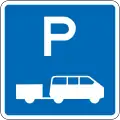 (R6-54) Shuttle Parking: No Limit
(R6-54) Shuttle Parking: No Limit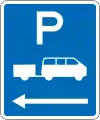 (R6-54.1) Shuttle Parking: No Limit (on the left of this sign)
(R6-54.1) Shuttle Parking: No Limit (on the left of this sign)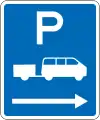 (R6-54.1) Shuttle Parking: No Limit (on the right of this sign)
(R6-54.1) Shuttle Parking: No Limit (on the right of this sign)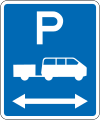 (R6-54.1) Shuttle Parking: No Limit (on both sides of this sign)
(R6-54.1) Shuttle Parking: No Limit (on both sides of this sign) (R6-54.2) Shuttle Parking: Time Limit
(R6-54.2) Shuttle Parking: Time Limit (R6-54.2) Shuttle Parking: Time Limit (on the left of this sign)
(R6-54.2) Shuttle Parking: Time Limit (on the left of this sign) (R6-54.2) Shuttle Parking: Time Limit (on the right of this sign)
(R6-54.2) Shuttle Parking: Time Limit (on the right of this sign) (R6-54.2) Shuttle Parking: Time Limit (on both sides of this sign)
(R6-54.2) Shuttle Parking: Time Limit (on both sides of this sign)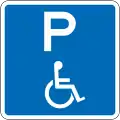 (R6-55) Disabled Parking: No Limit
(R6-55) Disabled Parking: No Limit (R6-55.1) Disabled Parking: No Limit (on the left of this sign)
(R6-55.1) Disabled Parking: No Limit (on the left of this sign)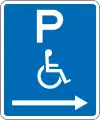 (R6-55.1) Disabled Parking: No Limit (on the right of this sign)
(R6-55.1) Disabled Parking: No Limit (on the right of this sign) (R6-55.1) Disabled Parking: No Limit (on both sides of this sign)
(R6-55.1) Disabled Parking: No Limit (on both sides of this sign) (R6-55.2) Disabled Parking: Time Limit
(R6-55.2) Disabled Parking: Time Limit (R6-55.2) Disabled Parking: Time Limit (on the left of this sign)
(R6-55.2) Disabled Parking: Time Limit (on the left of this sign) (R6-55.2) Disabled Parking: Time Limit (on the right of this sign)
(R6-55.2) Disabled Parking: Time Limit (on the right of this sign) (R6-55.2) Disabled Parking: Time Limit (on both sides of this sign)
(R6-55.2) Disabled Parking: Time Limit (on both sides of this sign) (R6-70) No Parking
(R6-70) No Parking (R6-71) No Parking: Bus Stop
(R6-71) No Parking: Bus Stop (R6-71.1) No Parking: Bus Stop (on the left of this sign)
(R6-71.1) No Parking: Bus Stop (on the left of this sign) (R6-71.1) No Parking: Bus Stop (on the right of this sign)
(R6-71.1) No Parking: Bus Stop (on the right of this sign) (R6-71.1) No Parking: Bus Stop (on both sides of this sign)
(R6-71.1) No Parking: Bus Stop (on both sides of this sign) (R6-71B) No Parking: Bus Stop
(R6-71B) No Parking: Bus Stop (R6-71.1B) No Parking: Bus Stop (on the left of this sign)
(R6-71.1B) No Parking: Bus Stop (on the left of this sign) (R6-71.1B) No Parking: Bus Stop (on the right of this sign)
(R6-71.1B) No Parking: Bus Stop (on the right of this sign) (R6-71.1B) No Parking: Bus Stop (on both sides of this sign)
(R6-71.1B) No Parking: Bus Stop (on both sides of this sign).svg.png.webp) (R6-72.2) No Parking: Coach Stop
(R6-72.2) No Parking: Coach Stop.svg.png.webp) (R6-72.2) No Parking: Coach Stop (on the left of this sign)
(R6-72.2) No Parking: Coach Stop (on the left of this sign).svg.png.webp) (R6-72.2) No Parking: Coach Stop (on the right of this sign)
(R6-72.2) No Parking: Coach Stop (on the right of this sign).svg.png.webp) (R6-72.2) No Parking: Coach Stop (on both sides of this sign)
(R6-72.2) No Parking: Coach Stop (on both sides of this sign) (R6-72) No Parking: Taxi Stand
(R6-72) No Parking: Taxi Stand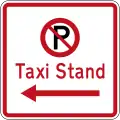 (R6-72.1) No Parking: Taxi Stand (on the left of this sign)
(R6-72.1) No Parking: Taxi Stand (on the left of this sign)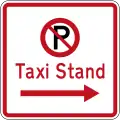 (R6-72.1) No Parking: Taxi Stand (on the right of this sign)
(R6-72.1) No Parking: Taxi Stand (on the right of this sign)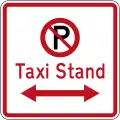 (R6-72.1) No Parking: Taxi Stand (on both sides of this sign)
(R6-72.1) No Parking: Taxi Stand (on both sides of this sign) (R6-73) No Parking: Shuttle Stop
(R6-73) No Parking: Shuttle Stop (R6-73.1) No Parking: Shuttle Stop (on the left of this sign)
(R6-73.1) No Parking: Shuttle Stop (on the left of this sign) (R6-73.1) No Parking: Shuttle Stop (on the right of this sign)
(R6-73.1) No Parking: Shuttle Stop (on the right of this sign) (R6-73.1) No Parking: Shuttle Stop (on both sides of this sign)
(R6-73.1) No Parking: Shuttle Stop (on both sides of this sign) (R6-74) No Parking: Tram Stop
(R6-74) No Parking: Tram Stop (R6-74.1) No Parking: Tram Stop (on the left of this sign)
(R6-74.1) No Parking: Tram Stop (on the left of this sign) (R6-74.1) No Parking: Tram Stop (on the right of this sign)
(R6-74.1) No Parking: Tram Stop (on the right of this sign) (R6-74.1) No Parking: Tram Stop (on both sides of this sign)
(R6-74.1) No Parking: Tram Stop (on both sides of this sign) (R6-79) No Parking: Emergency Vehicle Stop
(R6-79) No Parking: Emergency Vehicle Stop (R6-79.1) No Parking: Emergency Vehicle Stop (on the left of this sign)
(R6-79.1) No Parking: Emergency Vehicle Stop (on the left of this sign) (R6-79.1) No Parking: Emergency Vehicle Stop (on the right of this sign)
(R6-79.1) No Parking: Emergency Vehicle Stop (on the right of this sign) (R6-79.1) No Parking: Emergency Vehicle Stop (on both sides of this sign)
(R6-79.1) No Parking: Emergency Vehicle Stop (on both sides of this sign) (RP-3.4) Clearway During Prescribed Days
(RP-3.4) Clearway During Prescribed Days.svg.png.webp) (RP-11) Coupon Parking Zone Begins
(RP-11) Coupon Parking Zone Begins.svg.png.webp) (RP-11) Coupon Parking Zone Ends
(RP-11) Coupon Parking Zone Ends (RP-12) Coupon Parking Zone (repeater sign)
(RP-12) Coupon Parking Zone (repeater sign) Pay & Display Parking
Pay & Display Parking Vehicles With Permits Exempt
Vehicles With Permits Exempt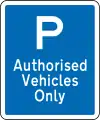 Parking For Authorised Vehicles Only
Parking For Authorised Vehicles Only
General Advisory
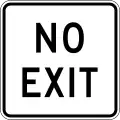 (A40-1) No Exit
(A40-1) No Exit (A40-2) Left Turn At Any Time With Care
(A40-2) Left Turn At Any Time With Care (A40-3) Warning Bells At Railway Crossing Turned Off (at times prescribed)
(A40-3) Warning Bells At Railway Crossing Turned Off (at times prescribed) (A41-3) Construction Zone (to the left)
(A41-3) Construction Zone (to the left) (A41-3) Construction Zone (to the right)
(A41-3) Construction Zone (to the right) (A41-4) Railway Not In Use
(A41-4) Railway Not In Use_(obsolete%253B_white).svg.png.webp) (IG-4) Heavy Vehicle By Pass Ahead (in 200 metres)
(IG-4) Heavy Vehicle By Pass Ahead (in 200 metres)_(obsolete%253B_white).svg.png.webp) (IG-4) Heavy Vehicle By Pass Ahead (in 300 metres)
(IG-4) Heavy Vehicle By Pass Ahead (in 300 metres).svg.png.webp) (IG-5) Heavy Vehicle By Pass (on left)
(IG-5) Heavy Vehicle By Pass (on left).svg.png.webp) (IG-5) Heavy Vehicle By Pass (on right)
(IG-5) Heavy Vehicle By Pass (on right)_(obsolete).svg.png.webp) (IG-6) Passing Lane Ahead (in 200 metres)
(IG-6) Passing Lane Ahead (in 200 metres)_(obsolete).svg.png.webp) (IG-6) Passing Lane Ahead (in 300 metres)
(IG-6) Passing Lane Ahead (in 300 metres)_(obsolete).svg.png.webp) (IG-6) Passing Lane Ahead (in 400 metres)
(IG-6) Passing Lane Ahead (in 400 metres)_(obsolete).svg.png.webp) (IG-6.1) Passing Lane Ahead (in 1 kilometre)
(IG-6.1) Passing Lane Ahead (in 1 kilometre)_(obsolete).svg.png.webp) (IG-6.1) Passing Lane Ahead (in 2 kilometres)
(IG-6.1) Passing Lane Ahead (in 2 kilometres)_(obsolete).svg.png.webp) (IG-7) Passing Bay Ahead (in 50 metres)
(IG-7) Passing Bay Ahead (in 50 metres)_(obsolete).svg.png.webp) (IG-7) Passing Bay Ahead (in 100 metres)
(IG-7) Passing Bay Ahead (in 100 metres)_(obsolete).svg.png.webp) (IG-7) Passing Bay Ahead (in 150 metres)
(IG-7) Passing Bay Ahead (in 150 metres)_(obsolete).svg.png.webp) (IG-7) Passing Bay Ahead (in 200 metres)
(IG-7) Passing Bay Ahead (in 200 metres)_(obsolete).svg.png.webp) (IG-7) Passing Bay Ahead (in 300 metres)
(IG-7) Passing Bay Ahead (in 300 metres)_(obsolete).svg.png.webp) (IG-8) Slow Vehicle Bays (for the next 2 kilometres)
(IG-8) Slow Vehicle Bays (for the next 2 kilometres)_(obsolete).svg.png.webp) (IG-8) Slow Vehicle Bays (for the next 5 kilometres)
(IG-8) Slow Vehicle Bays (for the next 5 kilometres)_(obsolete).svg.png.webp) (IG-8) Slow Vehicle Bays (for the next 10 kilometres)
(IG-8) Slow Vehicle Bays (for the next 10 kilometres)_(obsolete).svg.png.webp) (IG-9) Slow Vehicle Bay Ahead (in 300 metres)
(IG-9) Slow Vehicle Bay Ahead (in 300 metres)_(obsolete).svg.png.webp) (IG-9) Slow Vehicle Bay Ahead (in 1 kilometre)
(IG-9) Slow Vehicle Bay Ahead (in 1 kilometre)_(obsolete).svg.png.webp) (IG-9) Slow Vehicle Bay Ahead (in 2 kilometres)
(IG-9) Slow Vehicle Bay Ahead (in 2 kilometres).svg.png.webp) (IG-10) Slow Vehicle Bay (indicator sign)
(IG-10) Slow Vehicle Bay (indicator sign).svg.png.webp) (IG-17) Heavy Vehicles Please Do Not Use Engine Brakes (for the next 4 kilometres)
(IG-17) Heavy Vehicles Please Do Not Use Engine Brakes (for the next 4 kilometres).svg.png.webp) (IG-18) Stock Effluent Disposal Point Ahead (on left, in 300 metres)
(IG-18) Stock Effluent Disposal Point Ahead (on left, in 300 metres).svg.png.webp) (IG-18) Stock Effluent Disposal Point Ahead (on right, in 300 metres)
(IG-18) Stock Effluent Disposal Point Ahead (on right, in 300 metres).svg.png.webp) (IG-18) Stock Effluent Disposal Point Ahead (turning left, in 300 metres)
(IG-18) Stock Effluent Disposal Point Ahead (turning left, in 300 metres).svg.png.webp) (IG-18) Stock Effluent Disposal Point Ahead (turning right, in 300 metres)
(IG-18) Stock Effluent Disposal Point Ahead (turning right, in 300 metres).svg.png.webp) (IG-19) Stock Effluent Disposal Point (turn left)
(IG-19) Stock Effluent Disposal Point (turn left).svg.png.webp) (IG-19) Stock Effluent Disposal Point (turn right)
(IG-19) Stock Effluent Disposal Point (turn right).svg.png.webp) (IG-19) Stock Effluent Disposal Point (veer left)
(IG-19) Stock Effluent Disposal Point (veer left).svg.png.webp) (IG-19) Stock Effluent Disposal Point (veer right)
(IG-19) Stock Effluent Disposal Point (veer right).svg.png.webp) Cyclists Cross Here With Care (to the left)
Cyclists Cross Here With Care (to the left).svg.png.webp) Cyclists Cross Here With Care (to the right)
Cyclists Cross Here With Care (to the right).svg.png.webp) Cyclists Use Left Shoulder
Cyclists Use Left Shoulder.svg.png.webp) Cyclists Use Ramp
Cyclists Use Ramp
Warning
 10 km/h speed limit ahead
10 km/h speed limit ahead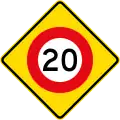 20 km/h speed limit ahead
20 km/h speed limit ahead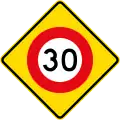 30 km/h speed limit ahead
30 km/h speed limit ahead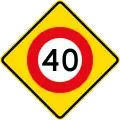 40 km/h speed limit ahead
40 km/h speed limit ahead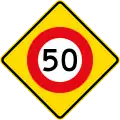 (W10-3) 50 km/h speed limit ahead
(W10-3) 50 km/h speed limit ahead 60 km/h speed limit ahead
60 km/h speed limit ahead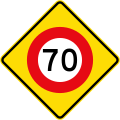 70 km/h speed limit ahead
70 km/h speed limit ahead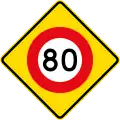 80 km/h speed limit ahead
80 km/h speed limit ahead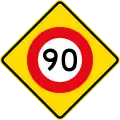 90 km/h speed limit ahead
90 km/h speed limit ahead Above sign effective 50 metres ahead
Above sign effective 50 metres ahead Above sign effective 100 metres ahead
Above sign effective 100 metres ahead Above sign effective 150 metres ahead
Above sign effective 150 metres ahead Above sign effective 200 metres ahead
Above sign effective 200 metres ahead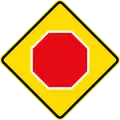 (W10-1/PW-1) Stop ahead
(W10-1/PW-1) Stop ahead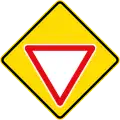 (W10-2/PW-2) Give Way ahead
(W10-2/PW-2) Give Way ahead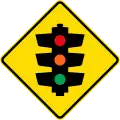 (W10-4/PW-3) Traffic lights ahead
(W10-4/PW-3) Traffic lights ahead (W11-6.1/PW-4) Merging traffic from left
(W11-6.1/PW-4) Merging traffic from left.svg.png.webp) (PW-4) Merging traffic from right
(PW-4) Merging traffic from right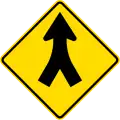 Merging traffic from both sides
Merging traffic from both sides (W14-1/PW-5) Road diverges (splits)
(W14-1/PW-5) Road diverges (splits) (W14-2/PW-6) Two-way traffic ahead
(W14-2/PW-6) Two-way traffic ahead (W11-7) Lane gain on left
(W11-7) Lane gain on left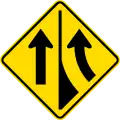 (W11-7) Lane gain on right
(W11-7) Lane gain on right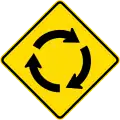 (W11-1/(PW-8) Roundabout ahead
(W11-1/(PW-8) Roundabout ahead (PW-9) Priority road straight ahead
(PW-9) Priority road straight ahead (PW-9.1) Priority road turns left
(PW-9.1) Priority road turns left (W11-2.1/PW-9.1) Priority road turns right
(W11-2.1/PW-9.1) Priority road turns right (PW-10) Controlled T-junction (priority turns left)
(PW-10) Controlled T-junction (priority turns left) (PW-10) Controlled T-junction (priority turns right)
(PW-10) Controlled T-junction (priority turns right)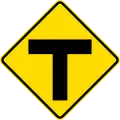 (PW-10.1) Uncontrolled T-junction
(PW-10.1) Uncontrolled T-junction (PW-11) Controlled side road junction on left
(PW-11) Controlled side road junction on left (PW-11) Controlled side road junction on right
(PW-11) Controlled side road junction on right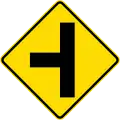 (PW-11.1) Uncontrolled side road junction on left
(PW-11.1) Uncontrolled side road junction on left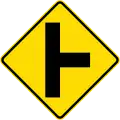 (PW-11.1) Uncontrolled side road junction on right
(PW-11.1) Uncontrolled side road junction on right.svg.png.webp) (PW-12) Controlled Y-junction on right
(PW-12) Controlled Y-junction on right.svg.png.webp) (PW-12) Controlled Y-junction on left
(PW-12) Controlled Y-junction on left (PW-12.1) Uncontrolled Y-junction
(PW-12.1) Uncontrolled Y-junction.svg.png.webp) (PW-13a) Railway level crossing on side road to left
(PW-13a) Railway level crossing on side road to left.svg.png.webp) (PW-13a) Railway level crossing on side road to right
(PW-13a) Railway level crossing on side road to right.svg.png.webp) (PW-13b) Railway level crossing on side road to left
(PW-13b) Railway level crossing on side road to left.svg.png.webp) (PW-13b) Railway level crossing on side road to right
(PW-13b) Railway level crossing on side road to right.svg.png.webp) (PW-13.1) Railway level crossing on side road to left
(PW-13.1) Railway level crossing on side road to left.svg.png.webp) (PW-13.1) Railway level crossing on side road to right
(PW-13.1) Railway level crossing on side road to right.svg.png.webp) (PW-13.2) Railway level crossing on controlled T-junction to left
(PW-13.2) Railway level crossing on controlled T-junction to left.svg.png.webp) (PW-13.2) Railway level crossing on controlled T-junction to right
(PW-13.2) Railway level crossing on controlled T-junction to right.svg.png.webp) (PW-13.3) Railway level crossing on uncontrolled T-junction to left
(PW-13.3) Railway level crossing on uncontrolled T-junction to left.svg.png.webp) (PW-13.3) Railway level crossing on uncontrolled T-junction to right
(PW-13.3) Railway level crossing on uncontrolled T-junction to right (PW-14) Railway Crossbuck
(PW-14) Railway Crossbuck (W15-3.1/PW-14b) Railway Crossbuck (with red backing board)
(W15-3.1/PW-14b) Railway Crossbuck (with red backing board).svg.png.webp) (PW-16) 90 degree curve, to left
(PW-16) 90 degree curve, to left.svg.png.webp) (PW-16) 90 degree curve, to right
(PW-16) 90 degree curve, to right.svg.png.webp) (PW-17) Curve between 15 and 90 degrees, to left
(PW-17) Curve between 15 and 90 degrees, to left.svg.png.webp) (PW-17) Curve between 15 and 90 degrees, to right
(PW-17) Curve between 15 and 90 degrees, to right.svg.png.webp) (PW-18) Sharp curve between 90 and 120 degrees, to left
(PW-18) Sharp curve between 90 and 120 degrees, to left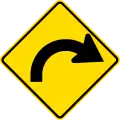 (W12-1.3/PW-18) Sharp curve between 90 and 120 degrees, to right
(W12-1.3/PW-18) Sharp curve between 90 and 120 degrees, to right.svg.png.webp) (PW-19) Dangerous curve greater than 120 degrees, to left
(PW-19) Dangerous curve greater than 120 degrees, to left.svg.png.webp) (PW-19) Dangerous curve greater than 120 degrees, to right
(PW-19) Dangerous curve greater than 120 degrees, to right.svg.png.webp) (PW-20) Reverse curve less than 60 degrees, to left
(PW-20) Reverse curve less than 60 degrees, to left.svg.png.webp) (PW-20) Reverse curve less than 60 degrees, to right
(PW-20) Reverse curve less than 60 degrees, to right.svg.png.webp) (PW-21) Reverse curve greater than 60 degrees, to left
(PW-21) Reverse curve greater than 60 degrees, to left.svg.png.webp) (PW-21) Reverse curve greater than 60 degrees, to right
(PW-21) Reverse curve greater than 60 degrees, to right.svg.png.webp) (PW-22) Reverse curve with decreasing radius, to left
(PW-22) Reverse curve with decreasing radius, to left.svg.png.webp) (PW-22) Reverse curve with decreasing radius, to right
(PW-22) Reverse curve with decreasing radius, to right.svg.png.webp) (PW-23) Series of curves ahead, first to left
(PW-23) Series of curves ahead, first to left.svg.png.webp) (PW-23) Series of curves ahead, first to right
(PW-23) Series of curves ahead, first to right.svg.png.webp) (PW-24) Sign effective for the next 2 kilometres
(PW-24) Sign effective for the next 2 kilometres.svg.png.webp) (PW-24) Sign effective for the next 3 kilometres
(PW-24) Sign effective for the next 3 kilometres.svg.png.webp) (PW-24) Sign effective for the next 4 kilometres
(PW-24) Sign effective for the next 4 kilometres.svg.png.webp) (PW-24) Sign effective for the next 5 kilometres
(PW-24) Sign effective for the next 5 kilometres.svg.png.webp) (PW-24) Sign effective for the next 6 kilometres
(PW-24) Sign effective for the next 6 kilometres.svg.png.webp) (PW-24) Sign effective for the next 7 kilometres
(PW-24) Sign effective for the next 7 kilometres.svg.png.webp) (PW-24) Sign effective for the next 8 kilometres
(PW-24) Sign effective for the next 8 kilometres.svg.png.webp) (PW-24) Sign effective for the next 9 kilometres
(PW-24) Sign effective for the next 9 kilometres.svg.png.webp) (PW-24) Sign effective for the next 10 kilometres
(PW-24) Sign effective for the next 10 kilometres.svg.png.webp) (PW-24) Sign effective for the next 15 kilometres
(PW-24) Sign effective for the next 15 kilometres.svg.png.webp) (PW-24) Sign effective for the next 20 kilometres
(PW-24) Sign effective for the next 20 kilometres.svg.png.webp) (PW-24) Sign effective for the next 25 kilometres
(PW-24) Sign effective for the next 25 kilometres.svg.png.webp) (PW-25) Advisory speed: 15 km/h
(PW-25) Advisory speed: 15 km/h.svg.png.webp) (PW-25) Advisory speed: 25 km/h
(PW-25) Advisory speed: 25 km/h.svg.png.webp) (PW-25) Advisory speed: 35 km/h
(PW-25) Advisory speed: 35 km/h.svg.png.webp) (PW-25) Advisory speed: 45 km/h
(PW-25) Advisory speed: 45 km/h.svg.png.webp) (PW-25) Advisory speed: 55 km/h
(PW-25) Advisory speed: 55 km/h.svg.png.webp) (PW-25) Advisory speed: 65 km/h
(PW-25) Advisory speed: 65 km/h.svg.png.webp) (PW-25) Advisory speed: 75 km/h
(PW-25) Advisory speed: 75 km/h.svg.png.webp) (PW-25) Advisory speed: 85 km/h
(PW-25) Advisory speed: 85 km/h.svg.png.webp) (PW-25) Advisory speed: 95 km/h
(PW-25) Advisory speed: 95 km/h.svg.png.webp) (PW-26) Curve between 15 and 90 degrees with minor road, to left
(PW-26) Curve between 15 and 90 degrees with minor road, to left.svg.png.webp) (PW-26) Curve between 15 and 90 degrees with minor road, to right
(PW-26) Curve between 15 and 90 degrees with minor road, to right.svg.png.webp) (PW-26) Curve between 90 and 120 degrees with minor road, to left
(PW-26) Curve between 90 and 120 degrees with minor road, to left.svg.png.webp) (PW-26) Curve between 90 and 120 degrees with minor road, to right
(PW-26) Curve between 90 and 120 degrees with minor road, to right (PW-26) Concealed
(PW-26) Concealed.svg.png.webp) Truck advisory speed (danger of rollover if speed is exceeded)
Truck advisory speed (danger of rollover if speed is exceeded).svg.png.webp) Truck advisory speed (danger of rollover if speed is exceeded)
Truck advisory speed (danger of rollover if speed is exceeded)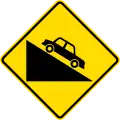 (W14-10.1/PW-27) Steep descent
(W14-10.1/PW-27) Steep descent (W14-9.1/PW-27) Steep ascent
(W14-9.1/PW-27) Steep ascent Steep descent (with grade)
Steep descent (with grade) Steep ascent (with grade)
Steep ascent (with grade) Use lower gear
Use lower gear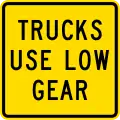 (PW-28) Trucks use lower gear
(PW-28) Trucks use lower gear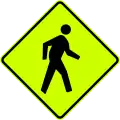 (PW-29) Watch for pedestrians crossing
(PW-29) Watch for pedestrians crossing (PW-29.1) Watch for aged pedestrians
(PW-29.1) Watch for aged pedestrians (PW-30) Crosswalk ahead
(PW-30) Crosswalk ahead (W16-4/PW-31) Watch for children crossing
(W16-4/PW-31) Watch for children crossing (PW-31.1) Kindergarten zone
(PW-31.1) Kindergarten zone (PW-32) School
(PW-32) School (PW-34) Watch for school buses
(PW-34) Watch for school buses (PW-34.1) School bus route
(PW-34.1) School bus route (PW-34.2) School bus turning area
(PW-34.2) School bus turning area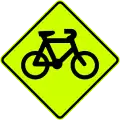 (PW-35) Watch for cyclists
(PW-35) Watch for cyclists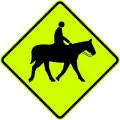 (PW-36) Watch for horses (Used in Ferrymead)
(PW-36) Watch for horses (Used in Ferrymead) (W18-3.1) Watch for animals (cattle)
(W18-3.1) Watch for animals (cattle)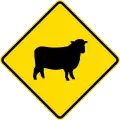 (W18-3.2) Watch for animals (sheep)
(W18-3.2) Watch for animals (sheep)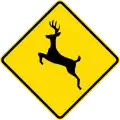 (W18-3.3) Watch for animals (deer)
(W18-3.3) Watch for animals (deer)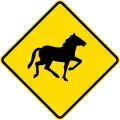 (W18-3.4) Watch for animals (wild horses)
(W18-3.4) Watch for animals (wild horses)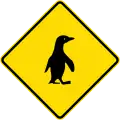 (W18-3.8) Watch for animals (penguins)
(W18-3.8) Watch for animals (penguins)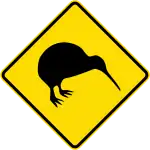 (W18-3.9) Watch for animals (kiwi)
(W18-3.9) Watch for animals (kiwi)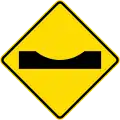 (W14-3/PW-38) Road dip
(W14-3/PW-38) Road dip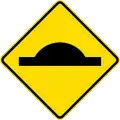 (W14-4/PW-39) Road bump
(W14-4/PW-39) Road bump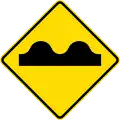 (PW-40) Uneven road
(PW-40) Uneven road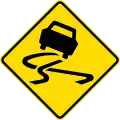 (PW-41) Slippery road
(PW-41) Slippery road (PW-41.1) Road slippery when frosty
(PW-41.1) Road slippery when frosty (PW-41.2) Road slippery when wet
(PW-41.2) Road slippery when wet (PW-41.3) Road has slippery gravel surface
(PW-41.3) Road has slippery gravel surface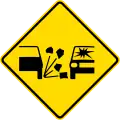 Loose road surface (danger of stir up)
Loose road surface (danger of stir up)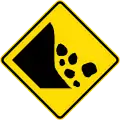 (W14-6/PW-42) Falling rocks or debris on left
(W14-6/PW-42) Falling rocks or debris on left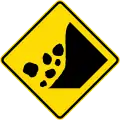 (PW-42) Falling rocks or debris on right
(PW-42) Falling rocks or debris on right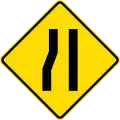 (PW-43) Road narrows on left
(PW-43) Road narrows on left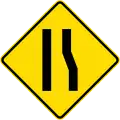 (PW-43) Road narrows on right
(PW-43) Road narrows on right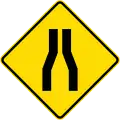 (PW-43.1) Road narrows on both sides
(PW-43.1) Road narrows on both sides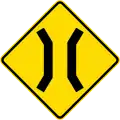 (PW-44) Narrow bridge
(PW-44) Narrow bridge (PW-44.1) Narrow Bridge, wide vehicles use caution
(PW-44.1) Narrow Bridge, wide vehicles use caution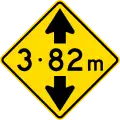 (PW-45) Maximum overhead clearance ahead
(PW-45) Maximum overhead clearance ahead (PW-46) Maximum height marker
(PW-46) Maximum height marker (PW-47) Overhead electrical cables
(PW-47) Overhead electrical cables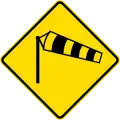 (PW-48) Danger of powerful wind gusts
(PW-48) Danger of powerful wind gusts (PW-49) Fire station
(PW-49) Fire station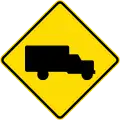 (PW-50) Watch for trucks
(PW-50) Watch for trucks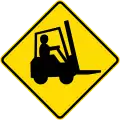 (PW-50.1) Watch for forklifts and other work vehicles
(PW-50.1) Watch for forklifts and other work vehicles (PW-51) Low-flying aircraft
(PW-51) Low-flying aircraft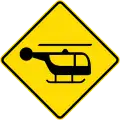 (PW-51.1) Low-flying helicopters
(PW-51.1) Low-flying helicopters (PW-52) Tunnel ahead
(PW-52) Tunnel ahead (PW-53) Attention: Other Dangers! (never used alone, a supplementary plate will explain the danger)
(PW-53) Attention: Other Dangers! (never used alone, a supplementary plate will explain the danger) (PW-54) Ford
(PW-54) Ford (PW-55) Cattle stop
(PW-55) Cattle stop (PW-56) Gate
(PW-56) Gate (PW-57) Uncontrolled railway crossing ahead
(PW-57) Uncontrolled railway crossing ahead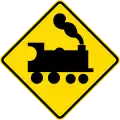 (PW-57) Uncontrolled railway crossing ahead
(PW-57) Uncontrolled railway crossing ahead (PW-58) Controlled railway crossing ahead with signals and gates
(PW-58) Controlled railway crossing ahead with signals and gates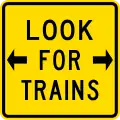 (PW-59) Look both ways for trains before crossing
(PW-59) Look both ways for trains before crossing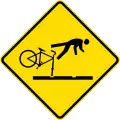 Cyclists take care on rail tracks
Cyclists take care on rail tracks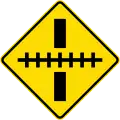 (PW-60) Railway crossing ahead at a right angle
(PW-60) Railway crossing ahead at a right angle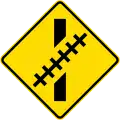 (PW-60.1) Railway crossing ahead at an oblique angle
(PW-60.1) Railway crossing ahead at an oblique angle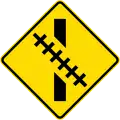 (PW-60.2) Railway crossing ahead at an oblique angle
(PW-60.2) Railway crossing ahead at an oblique angle.svg.png.webp) (PW-63) Light rail crossing
(PW-63) Light rail crossing.svg.png.webp) (PW-63) Light rail crossing
(PW-63) Light rail crossing.svg.png.webp) Prepare to stop ahead
Prepare to stop ahead.svg.png.webp) Hidden queue ahead
Hidden queue ahead.svg.png.webp) Queued vehicles ahead
Queued vehicles ahead (PW-65) Belisha beacon
(PW-65) Belisha beacon.svg.png.webp) (PW-66) Curve marker with integrated advisory speed
(PW-66) Curve marker with integrated advisory speed.svg.png.webp) (PW-66) Curve marker with integrated advisory speed
(PW-66) Curve marker with integrated advisory speed.svg.png.webp) (PW-66) Curve marker with integrated advisory speed
(PW-66) Curve marker with integrated advisory speed.svg.png.webp) (PW-66) Curve marker with integrated advisory speed
(PW-66) Curve marker with integrated advisory speed.svg.png.webp) (PW-67) Curve marker
(PW-67) Curve marker.svg.png.webp) (PW-67) Curve marker
(PW-67) Curve marker.svg.png.webp) End of road marker (used at T-junctions)
End of road marker (used at T-junctions).svg.png.webp) End of road marker (used at T-junctions)
End of road marker (used at T-junctions) Roundabout hazard marker
Roundabout hazard marker
Vehicle Mounted
 School Bus signals (orange lights will flash when children are boarding and disembarking)
School Bus signals (orange lights will flash when children are boarding and disembarking) School Vehicle
School Vehicle School Bus
School Bus School
School Danger - Slow Down
Danger - Slow Down Pilot Vehicle (for an over-dimension convoy)
Pilot Vehicle (for an over-dimension convoy) House Ahead (house-carrying truck convoy ahead)
House Ahead (house-carrying truck convoy ahead) House Follows (house-carrying truck follows behind pilot)
House Follows (house-carrying truck follows behind pilot) Long Load Ahead (extra-long vehicle convoy ahead)
Long Load Ahead (extra-long vehicle convoy ahead) Long Load Follows (extra-long vehicle convoy follows behind pilot)
Long Load Follows (extra-long vehicle convoy follows behind pilot) Wide Load Ahead (extra-wide vehicle convoy ahead)
Wide Load Ahead (extra-wide vehicle convoy ahead) Wide Load Follows (extra-wide vehicle convoy follows behind pilot)
Wide Load Follows (extra-wide vehicle convoy follows behind pilot)
Temporary Warning
 (T1A) Road Works
(T1A) Road Works.svg.png.webp) (TW-1.1) For the next 1 kilometre
(TW-1.1) For the next 1 kilometre.svg.png.webp) (TW-1.1) For the next 2 kilometres
(TW-1.1) For the next 2 kilometres.svg.png.webp) (TW-1.1) For the next 3 kilometres
(TW-1.1) For the next 3 kilometres.svg.png.webp) (TW-1.1) For the next 4 kilometres
(TW-1.1) For the next 4 kilometres (TW-1.2.2) Wet tar
(TW-1.2.2) Wet tar (TW-1.3) Grader
(TW-1.3) Grader (TW-1.3) Mower
(TW-1.3) Mower (TW-1.3) Skid testing
(TW-1.3) Skid testing (TW-1.3) Weed sprayer
(TW-1.3) Weed sprayer (TW-1.4) Road marking
(TW-1.4) Road marking (TW-1.5) On side road
(TW-1.5) On side road (TW-1.6) Shoulder closed
(TW-1.6) Shoulder closed (TW-1.7) Surveying
(TW-1.7) Surveying (TW-1.8) Bridge repairs
(TW-1.8) Bridge repairs (TW-1B.1.1) Road workers ahead in 1 kilometre
(TW-1B.1.1) Road workers ahead in 1 kilometre (TW-1B.1.2) Road workers ahead in 2 kilometres
(TW-1B.1.2) Road workers ahead in 2 kilometres (TW-1B2.1) Road workers ahead in 1 kilometre, delays possible
(TW-1B2.1) Road workers ahead in 1 kilometre, delays possible (TW-1B2.2) Road workers ahead in 2 kilometres, delays possible
(TW-1B2.2) Road workers ahead in 2 kilometres, delays possible.svg.png.webp) (TW-1B3(10) Road works speed limit ahead - 10 km/h
(TW-1B3(10) Road works speed limit ahead - 10 km/h.svg.png.webp) (TW-1B3(20) Road works speed limit ahead - 20 km/h
(TW-1B3(20) Road works speed limit ahead - 20 km/h.svg.png.webp) (TW-1B3(30) Road works speed limit ahead - 30 km/h
(TW-1B3(30) Road works speed limit ahead - 30 km/h.svg.png.webp) (TW-1B3(40) Road works speed limit ahead - 40 km/h
(TW-1B3(40) Road works speed limit ahead - 40 km/h.svg.png.webp) (TW-1B3(50) Road works speed limit ahead - 50 km/h
(TW-1B3(50) Road works speed limit ahead - 50 km/h.svg.png.webp) (TW-1B3(60) Road works speed limit ahead - 60 km/h
(TW-1B3(60) Road works speed limit ahead - 60 km/h.svg.png.webp) (TW-1B3(70) Road works speed limit ahead - 70 km/h
(TW-1B3(70) Road works speed limit ahead - 70 km/h.svg.png.webp) (TW-1B3(80) Road works speed limit ahead - 80 km/h
(TW-1B3(80) Road works speed limit ahead - 80 km/h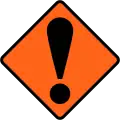 (TW-2) Attention - Other Dangers! (never used alone, a supplementary plate will explain the danger)
(TW-2) Attention - Other Dangers! (never used alone, a supplementary plate will explain the danger) (TW-2.1) Flooding
(TW-2.1) Flooding (TW-2.2) Washout
(TW-2.2) Washout (TW-2.3) Line crew
(TW-2.3) Line crew (TW-2.4) Blasting
(TW-2.4) Blasting (TW-2.5) Tree Felling
(TW-2.5) Tree Felling (TW-2.6) Logging Trucks
(TW-2.6) Logging Trucks (TW-2.7) Trucks Crossing
(TW-2.7) Trucks Crossing (TW-2.8) No Road Markings
(TW-2.8) No Road Markings (TW-2.9) Signals Changed
(TW-2.9) Signals Changed (TW-2.10) Signals Not Working
(TW-2.10) Signals Not Working (TW-2.11) New Road Layout
(TW-2.11) New Road Layout (TW-2.12) Traffic Survey
(TW-2.12) Traffic Survey (TW-2.13.1) Cycle Race
(TW-2.13.1) Cycle Race (TW-2.13.2) Runners
(TW-2.13.2) Runners (TW-2.13.3) Walkers
(TW-2.13.3) Walkers (TW-2.14) Accident
(TW-2.14) Accident (TW-2.15) Fire
(TW-2.15) Fire (TW-2.16.1) Cyclists Ahead
(TW-2.16.1) Cyclists Ahead (TW-2.16.2) Runners Ahead
(TW-2.16.2) Runners Ahead (TW-2.16.3) Walkers Ahead
(TW-2.16.3) Walkers Ahead (TW-2.17) Funeral (funeral procession)
(TW-2.17) Funeral (funeral procession) (TW-2.18) Film Crew
(TW-2.18) Film Crew Emergency
Emergency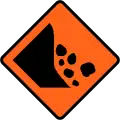 (TW-3) Falling rocks or debris on left
(TW-3) Falling rocks or debris on left (TW-3) Falling rocks or debris on right
(TW-3) Falling rocks or debris on right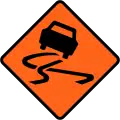 (TW-4) Slippery road
(TW-4) Slippery road (TW-4.1) Slippery road surface due to ice or grit
(TW-4.1) Slippery road surface due to ice or grit (TW-5) Loose road surface
(TW-5) Loose road surface (TW-5.1) New seal
(TW-5.1) New seal (TW-5.2) Seal repairs
(TW-5.2) Seal repairs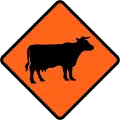 (TW-6) Watch for large animals (cattle)
(TW-6) Watch for large animals (cattle) (TW-6.1) Watch for large animals (sheep)
(TW-6.1) Watch for large animals (sheep).svg.png.webp) (TW-7) Sign effective 100 metres ahead
(TW-7) Sign effective 100 metres ahead.svg.png.webp) (TW-7) Sign effective 200 metres ahead
(TW-7) Sign effective 200 metres ahead.svg.png.webp) (TW-7) Sign effective 300 metres ahead
(TW-7) Sign effective 300 metres ahead.svg.png.webp) (TW-7) Sign effective 400 metres ahead
(TW-7) Sign effective 400 metres ahead.svg.png.webp) (TW-7) Lane merge
(TW-7) Lane merge.svg.png.webp) (TW-7) Lane management
(TW-7) Lane management.svg.png.webp) (TW-7.1) Lane management
(TW-7.1) Lane management.svg.png.webp) (TW-7.1) Lane management
(TW-7.1) Lane management.svg.png.webp) (TW-7.1.1) Lane management
(TW-7.1.1) Lane management.svg.png.webp) (TW-7.1.1) Lane management
(TW-7.1.1) Lane management.svg.png.webp) (TW-7.2B) Lane management
(TW-7.2B) Lane management.svg.png.webp) (TW-7.2B) Lane management
(TW-7.2B) Lane management.svg.png.webp) (TW-8) Lane management
(TW-8) Lane management.svg.png.webp) (TW-8) Lane management
(TW-8) Lane management.svg.png.webp) (TW-8.1) Lane management
(TW-8.1) Lane management.svg.png.webp) (TW-8.1) Lane management
(TW-8.1) Lane management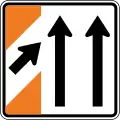 (TW-9) Lane management
(TW-9) Lane management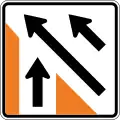 (TW-10) Lane management
(TW-10) Lane management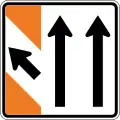 (TW-11) Lane management
(TW-11) Lane management (TW-12) Exit marker
(TW-12) Exit marker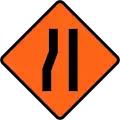 (TW-13) Road narrows on left
(TW-13) Road narrows on left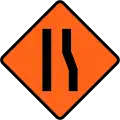 (TW-13) Road narrows on right
(TW-13) Road narrows on right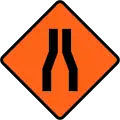 (TW-13.1) Road narrows on both sides
(TW-13.1) Road narrows on both sides (TW-13) Road narrows to a single lane
(TW-13) Road narrows to a single lane (TW-14) Traffic lights ahead
(TW-14) Traffic lights ahead (TW-15) Flagman ahead
(TW-15) Flagman ahead (TW-15) Please stop on request (for flagman)
(TW-15) Please stop on request (for flagman) (TW-16) Works End
(TW-16) Works End (TW-17) Thank You
(TW-17) Thank You (TW-19) Dry Your Brakes
(TW-19) Dry Your Brakes (TW-20) Road closed ahead
(TW-20) Road closed ahead (TW-20.1) Exit closed ahead
(TW-20.1) Exit closed ahead (TW-21) Detour ahead - follow circle symbol
(TW-21) Detour ahead - follow circle symbol (TW-21) Detour ahead - follow diamond symbol
(TW-21) Detour ahead - follow diamond symbol (TW-21) Detour ahead - follow square symbol
(TW-21) Detour ahead - follow square symbol (TW-21) Detour ahead - follow state highway shield
(TW-21) Detour ahead - follow state highway shield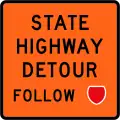 State highway detour ahead - follow state highway shield
State highway detour ahead - follow state highway shield (TW-22) Detour - follow circle symbol
(TW-22) Detour - follow circle symbol (TW-22) Detour - follow circle symbol
(TW-22) Detour - follow circle symbol (TW-22) Detour - follow circle symbol
(TW-22) Detour - follow circle symbol (TW-22) Detour - follow circle symbol
(TW-22) Detour - follow circle symbol (TW-22) Detour - follow circle symbol
(TW-22) Detour - follow circle symbol (TW-22) Detour - follow circle symbol
(TW-22) Detour - follow circle symbol (TW-22) Detour - follow diamond symbol
(TW-22) Detour - follow diamond symbol (TW-22) Detour - follow diamond symbol
(TW-22) Detour - follow diamond symbol (TW-22) Detour - follow diamond symbol
(TW-22) Detour - follow diamond symbol (TW-22) Detour - follow diamond symbol
(TW-22) Detour - follow diamond symbol (TW-22) Detour - follow diamond symbol
(TW-22) Detour - follow diamond symbol (TW-22) Detour - follow diamond symbol
(TW-22) Detour - follow diamond symbol (TW-22) Detour - follow square symbol
(TW-22) Detour - follow square symbol (TW-22) Detour - follow square symbol
(TW-22) Detour - follow square symbol (TW-22) Detour - follow square symbol
(TW-22) Detour - follow square symbol (TW-22) Detour - follow square symbol
(TW-22) Detour - follow square symbol (TW-22) Detour - follow square symbol
(TW-22) Detour - follow square symbol (TW-22) Detour - follow square symbol
(TW-22) Detour - follow square symbol (TW-22) Detour - follow state highway shield
(TW-22) Detour - follow state highway shield (TW-22) Detour - follow state highway shield
(TW-22) Detour - follow state highway shield (TW-22) Detour - follow state highway shield
(TW-22) Detour - follow state highway shield (TW-22) Detour - follow state highway shield
(TW-22) Detour - follow state highway shield (TW-22) Detour - follow state highway shield
(TW-22) Detour - follow state highway shield (TW-22) Detour - follow state highway shield
(TW-22) Detour - follow state highway shield (TW-23) Detour Ends
(TW-23) Detour Ends (TW-24) Cement Splashes - Wash Car Today
(TW-24) Cement Splashes - Wash Car Today (TW-24.1) Lime Splashes - Wash Car Today
(TW-24.1) Lime Splashes - Wash Car Today (TW-25) Pilot Car. Follow Me.
(TW-25) Pilot Car. Follow Me. (TW-26) Road Works
(TW-26) Road Works (TW-27) Road Inspection
(TW-27) Road Inspection.svg.png.webp) (TW-28) Works site access - 100 metres ahead on left
(TW-28) Works site access - 100 metres ahead on left.svg.png.webp) (TW-28) Works site access - 100 metres ahead on right
(TW-28) Works site access - 100 metres ahead on right.svg.png.webp) (TW-28) Works site access - 200 metres ahead on left
(TW-28) Works site access - 200 metres ahead on left.svg.png.webp) (TW-28) Works site access - 200 metres ahead on right
(TW-28) Works site access - 200 metres ahead on right.svg.png.webp) (TW-29) Works site access on left
(TW-29) Works site access on left.svg.png.webp) (TW-29) Works site access on right
(TW-29) Works site access on right (TW-30) Crossing closed - please use alternative crossing
(TW-30) Crossing closed - please use alternative crossing (TW-31) Footpath closed - please use other side
(TW-31) Footpath closed - please use other side (TW-32) Cyclists follow this sign
(TW-32) Cyclists follow this sign (TW-32) Cyclists follow this sign
(TW-32) Cyclists follow this sign (TW-32) Cyclists follow this sign
(TW-32) Cyclists follow this sign (TW-32) Cyclists follow this sign
(TW-32) Cyclists follow this sign (TW-32) Cyclists follow this sign
(TW-32) Cyclists follow this sign (TW-32) Cyclists follow this sign
(TW-32) Cyclists follow this sign (TW-32) Pedestrians follow this sign
(TW-32) Pedestrians follow this sign (TW-32) Pedestrians follow this sign
(TW-32) Pedestrians follow this sign (TW-32) Pedestrians follow this sign
(TW-32) Pedestrians follow this sign (TW-32) Pedestrians follow this sign
(TW-32) Pedestrians follow this sign (TW-32) Pedestrians follow this sign
(TW-32) Pedestrians follow this sign (TW-32) Pedestrians follow this sign
(TW-32) Pedestrians follow this sign (TW-34) Pass With Care
(TW-34) Pass With Care (TW-35) Road diverges (splits)
(TW-35) Road diverges (splits)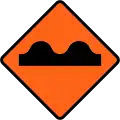 (TW-36) Uneven road surface
(TW-36) Uneven road surface Breakdown warning triangle
Breakdown warning triangle
Route markers
 State Highway Marker
State Highway Marker
Obsolete
_(obsolete).svg.png.webp) (R1-1) 10 km/h speed limit
(R1-1) 10 km/h speed limit_(obsolete).svg.png.webp) (R1-1) 20 km/h speed limit
(R1-1) 20 km/h speed limit_(obsolete).svg.png.webp) (R1-1) 30 km/h speed limit
(R1-1) 30 km/h speed limit_(obsolete).svg.png.webp) (R1-1) 40 km/h speed limit
(R1-1) 40 km/h speed limit_(obsolete).svg.png.webp) (R1-1) 50 km/h speed limit
(R1-1) 50 km/h speed limit_(obsolete).svg.png.webp) (R1-1) 60 km/h speed limit
(R1-1) 60 km/h speed limit_(obsolete).svg.png.webp) (R1-1) 70 km/h speed limit
(R1-1) 70 km/h speed limit_(obsolete).svg.png.webp) (R1-1) 80 km/h speed limit
(R1-1) 80 km/h speed limit_(obsolete).svg.png.webp) (R1-1) 90 km/h speed limit
(R1-1) 90 km/h speed limit.svg.png.webp) (R1-6.1) 40 km/h school zone speed limit in effect during times specified
(R1-6.1) 40 km/h school zone speed limit in effect during times specified.svg.png.webp) (R1-8) Temporary sign (added to speed limit signs to indicate the limit is only temporary)
(R1-8) Temporary sign (added to speed limit signs to indicate the limit is only temporary).svg.png.webp) (R1-8.1) Temporary sign (added to speed limit signs to indicate the limit is only temporary)
(R1-8.1) Temporary sign (added to speed limit signs to indicate the limit is only temporary)_(obsolete).svg.png.webp) (R1-8.1) 10 km/h speed limit
(R1-8.1) 10 km/h speed limit_(obsolete).svg.png.webp) (R1-8.1) 20 km/h speed limit
(R1-8.1) 20 km/h speed limit_(obsolete).svg.png.webp) (R1-8.1) 30 km/h speed limit
(R1-8.1) 30 km/h speed limit_(obsolete).svg.png.webp) (R1-8.1) 40 km/h speed limit
(R1-8.1) 40 km/h speed limit_(obsolete).svg.png.webp) (R1-8.1) 50 km/h speed limit
(R1-8.1) 50 km/h speed limit_(obsolete).svg.png.webp) (R1-8.1) 60 km/h speed limit
(R1-8.1) 60 km/h speed limit_(obsolete).svg.png.webp) (R1-8.1) 70 km/h speed limit
(R1-8.1) 70 km/h speed limit_(obsolete).svg.png.webp) (R1-8.1) 80 km/h speed limit
(R1-8.1) 80 km/h speed limit_(obsolete).svg.png.webp) (R1-8.1) 90 km/h speed limit
(R1-8.1) 90 km/h speed limit.svg.png.webp) (R2-1) Stop
(R2-1) Stop.svg.png.webp) Old version of Give Way (1964-1987)
Old version of Give Way (1964-1987).svg.png.webp) (R2-6) Stop on Red Signal
(R2-6) Stop on Red Signal (2011–2016) Stop Here on Red Signal
(2011–2016) Stop Here on Red Signal.svg.png.webp) (R2-7.1) Give Way (added to R2-7) (used at traffic bottleneck points)
(R2-7.1) Give Way (added to R2-7) (used at traffic bottleneck points).svg.png.webp) (R2-8) Priority Over Oncoming Vehicles (used at traffic bottleneck points)
(R2-8) Priority Over Oncoming Vehicles (used at traffic bottleneck points).svg.png.webp) Old version of Turning Traffic Give Way to Pedestrians (19??-1987)
Old version of Turning Traffic Give Way to Pedestrians (19??-1987).svg.png.webp) (R3-1) No Left Turn
(R3-1) No Left Turn.svg.png.webp) (R3-2) No Right Turn
(R3-2) No Right Turn.svg.png.webp) (R3-3) No U-turn
(R3-3) No U-turn.svg.png.webp) (R3-5.1) Except Buses
(R3-5.1) Except Buses.svg.png.webp) (R3-5.2) Except Cycles
(R3-5.2) Except Cycles.svg.png.webp) (R3-5.3) Except Authorised Vehicles
(R3-5.3) Except Authorised Vehicles.svg.png.webp) (R3-6) Road Closed
(R3-6) Road Closed.svg.png.webp) (R3-7) Wrong Way
(R3-7) Wrong Way.svg.png.webp) (R3-8) Turn Left
(R3-8) Turn Left.svg.png.webp) (R3-9) Proceed Straight Ahead (no turns allowed)
(R3-9) Proceed Straight Ahead (no turns allowed).svg.png.webp) (R3-10) Turn Right
(R3-10) Turn Right.svg.png.webp) (R3-11) Turn Left or Right
(R3-11) Turn Left or Right.svg.png.webp) (R3-12) One-way traffic (pointing left)
(R3-12) One-way traffic (pointing left).svg.png.webp) (R3-12) One-way traffic (pointing right)
(R3-12) One-way traffic (pointing right).svg.png.webp) (R3-13) Keep Left
(R3-13) Keep Left.svg.png.webp) (RG-13.2) Keep Right
(RG-13.2) Keep Right.svg.png.webp) (R4-11.1) Cyclists and Pedestrians Maintain Sides
(R4-11.1) Cyclists and Pedestrians Maintain Sides.svg.png.webp) (R4-11.2) Cyclists and Pedestrians Maintain Sides
(R4-11.2) Cyclists and Pedestrians Maintain Sides.svg.png.webp) (R4-12) Emergency Stopping Lane
(R4-12) Emergency Stopping Lane.svg.png.webp) (R5-1) No Cyclists or Mopeds
(R5-1) No Cyclists or Mopeds.svg.png.webp) (R5-2) No Pedestrians
(R5-2) No Pedestrians.svg.png.webp) (R5-3) No Heavy Vehicles
(R5-3) No Heavy Vehicles.svg.png.webp) (R5-4.1) Maximum Height Restriction
(R5-4.1) Maximum Height Restriction.svg.png.webp) (R5-4.2) Maximum Height Restriction
(R5-4.2) Maximum Height Restriction.svg.png.webp) (R5-5) Pedestrians Only (marks a pedestrian zone where motor vehicles are prohibited)
(R5-5) Pedestrians Only (marks a pedestrian zone where motor vehicles are prohibited).svg.png.webp) (R5-6) Cycles Must Exit
(R5-6) Cycles Must Exit.svg.png.webp) (R5-8) Maximum Length for Heavy Vehicles
(R5-8) Maximum Length for Heavy Vehicles.svg.png.webp) (R6-10.1) No Stopping (on the left of this sign)
(R6-10.1) No Stopping (on the left of this sign).svg.png.webp) (R6-10.1) No Stopping (on the right of this sign)
(R6-10.1) No Stopping (on the right of this sign).svg.png.webp) (R6-10.1) No Stopping (on both sides of this sign)
(R6-10.1) No Stopping (on both sides of this sign).svg.png.webp) (R6-10.1B) No Stopping (on the left of this sign)
(R6-10.1B) No Stopping (on the left of this sign).svg.png.webp) (R6-10.1B) No Stopping (on the right of this sign)
(R6-10.1B) No Stopping (on the right of this sign).svg.png.webp) (R6-10.1B) No Stopping (on both sides of this sign)
(R6-10.1B) No Stopping (on both sides of this sign).svg.png.webp) (R6-11) No Stopping at times prescribed (on the left of this sign)
(R6-11) No Stopping at times prescribed (on the left of this sign).svg.png.webp) (R6-11) No Stopping at times prescribed (on the right of this sign)
(R6-11) No Stopping at times prescribed (on the right of this sign).svg.png.webp) (R6-11) No Stopping at times prescribed (on both sides of this sign)
(R6-11) No Stopping at times prescribed (on both sides of this sign).svg.png.webp) (R6-11.1) Late Night Extension (added to R6-11)
(R6-11.1) Late Night Extension (added to R6-11).svg.png.webp) (R6-12.1) Clearway (No Stopping) (with single peak time)
(R6-12.1) Clearway (No Stopping) (with single peak time).svg.png.webp) (R6-12.2) Clearway (No Stopping) (with two peak times)
(R6-12.2) Clearway (No Stopping) (with two peak times).svg.png.webp) (R6-12.3) Clearway (No Stopping) during times specified
(R6-12.3) Clearway (No Stopping) during times specified.svg.png.webp) (R6-30) Parking Permitted: 30 Minutes (on the left of this sign, standard hours)
(R6-30) Parking Permitted: 30 Minutes (on the left of this sign, standard hours).svg.png.webp) (R6-30) Parking Permitted: 30 Minutes (on the right of this sign, standard hours)
(R6-30) Parking Permitted: 30 Minutes (on the right of this sign, standard hours).svg.png.webp) (R6-30) Parking Permitted: 30 Minutes (on both sides of this sign, standard hours)
(R6-30) Parking Permitted: 30 Minutes (on both sides of this sign, standard hours).svg.png.webp) (R6-30) Parking Permitted: 60 Minutes (on the left of this sign, standard hours)
(R6-30) Parking Permitted: 60 Minutes (on the left of this sign, standard hours).svg.png.webp) (R6-30) Parking Permitted: 60 Minutes (on the right of this sign, standard hours)
(R6-30) Parking Permitted: 60 Minutes (on the right of this sign, standard hours).svg.png.webp) (R6-30) Parking Permitted: 60 Minutes (on the both sides of this sign, standard hours)
(R6-30) Parking Permitted: 60 Minutes (on the both sides of this sign, standard hours).svg.png.webp) (R6-30) Parking Permitted: 120 Minutes (on the left of this sign, standard hours)
(R6-30) Parking Permitted: 120 Minutes (on the left of this sign, standard hours).svg.png.webp) (R6-30) Parking Permitted: 120 Minutes (on the right of this sign, standard hours)
(R6-30) Parking Permitted: 120 Minutes (on the right of this sign, standard hours).svg.png.webp) (R6-30) Parking Permitted: 120 Minutes (on both sides of this sign, standard hours)
(R6-30) Parking Permitted: 120 Minutes (on both sides of this sign, standard hours).svg.png.webp) (R6-31) Parking Permitted: 30 Minutes (on the left of this sign, non-standard hours)
(R6-31) Parking Permitted: 30 Minutes (on the left of this sign, non-standard hours).svg.png.webp) (R6-31) Parking Permitted: 30 Minutes (on the right of this sign, non-standard hours)
(R6-31) Parking Permitted: 30 Minutes (on the right of this sign, non-standard hours).svg.png.webp) (R6-31) Parking Permitted: 30 Minutes (on both sides of this sign, non-standard hours)
(R6-31) Parking Permitted: 30 Minutes (on both sides of this sign, non-standard hours).svg.png.webp) (R6-32) Parking Permitted: 30 Minutes (on the left of this sign, other times)
(R6-32) Parking Permitted: 30 Minutes (on the left of this sign, other times).svg.png.webp) (R6-32) Parking Permitted: 30 Minutes (on the right of this sign, other times)
(R6-32) Parking Permitted: 30 Minutes (on the right of this sign, other times).svg.png.webp) (R6-32) Parking Permitted: 30 Minutes (on both sides of this sign, other times)
(R6-32) Parking Permitted: 30 Minutes (on both sides of this sign, other times).svg.png.webp) (R6-50.1) Good Vehicles Only
(R6-50.1) Good Vehicles Only.svg.png.webp) (R6-50.2) 5 Minute Maximum, Goods Vehicles Only
(R6-50.2) 5 Minute Maximum, Goods Vehicles Only.svg.png.webp) (R6-50.5) Loading Zone Parking: 5 Minutes
(R6-50.5) Loading Zone Parking: 5 Minutes.svg.png.webp) (R6-50.5) Loading Zone Parking: 5 Minutes (on the left of this sign)
(R6-50.5) Loading Zone Parking: 5 Minutes (on the left of this sign).svg.png.webp) (R6-50.5) Loading Zone Parking: 5 Minutes (on the right of this sign)
(R6-50.5) Loading Zone Parking: 5 Minutes (on the right of this sign).svg.png.webp) (R6-50.5) Loading Zone Parking: 5 Minutes (on both sides of this sign)
(R6-50.5) Loading Zone Parking: 5 Minutes (on both sides of this sign).svg.png.webp) (R6-51) Motorcycle Parking
(R6-51) Motorcycle Parking.svg.png.webp) (R6-51.1) Motorcycle Parking (on the left of this sign)
(R6-51.1) Motorcycle Parking (on the left of this sign).svg.png.webp) (R6-51.1) Motorcycle Parking (on the right of this sign)
(R6-51.1) Motorcycle Parking (on the right of this sign).svg.png.webp) (R6-51.1) Motorcycle Parking (on both sides of this sign)
(R6-51.1) Motorcycle Parking (on both sides of this sign).svg.png.webp) (R6-52) Cyclists Parking
(R6-52) Cyclists Parking.svg.png.webp) (R6-52.1) Cyclists Parking (on the left of this sign)
(R6-52.1) Cyclists Parking (on the left of this sign).svg.png.webp) (R6-52.1) Cyclists Parking (on the right of this sign)
(R6-52.1) Cyclists Parking (on the right of this sign).svg.png.webp) (R6-52.1) Cyclists Parking (on both sides of this sign)
(R6-52.1) Cyclists Parking (on both sides of this sign).svg.png.webp) (R6-53) Bus Parking: No Limit
(R6-53) Bus Parking: No Limit.svg.png.webp) (R6-53.1) Bus Parking: No Limit (on the left of this sign)
(R6-53.1) Bus Parking: No Limit (on the left of this sign).svg.png.webp) (R6-53.1) Bus Parking: No Limit (on the right of this sign)
(R6-53.1) Bus Parking: No Limit (on the right of this sign).svg.png.webp) (R6-53.1) Bus Parking: No Limit (on both sides of this sign)
(R6-53.1) Bus Parking: No Limit (on both sides of this sign).svg.png.webp) (R6-53.2.1) Bus Parking: Time Limit
(R6-53.2.1) Bus Parking: Time Limit.svg.png.webp) (R6-53.2.1) Bus Parking: Time Limit (on the left of this sign)
(R6-53.2.1) Bus Parking: Time Limit (on the left of this sign).svg.png.webp) (R6-53.2.1) Bus Parking: Time Limit (on the right of this sign)
(R6-53.2.1) Bus Parking: Time Limit (on the right of this sign).svg.png.webp) (R6-53.2.1) Bus Parking: Time Limit (on both sides of this sign)
(R6-53.2.1) Bus Parking: Time Limit (on both sides of this sign).svg.png.webp) (R6-53.2.2) Bus Parking: Non-standard Hours (on the left of this sign)
(R6-53.2.2) Bus Parking: Non-standard Hours (on the left of this sign).svg.png.webp) (R6-53.2.2) Bus Parking: Non-standard Hours (on the right of this sign)
(R6-53.2.2) Bus Parking: Non-standard Hours (on the right of this sign).svg.png.webp) '(R6-53.2.2) Bus Parking: Non-standard Hours' (on both sides of this sign)
'(R6-53.2.2) Bus Parking: Non-standard Hours' (on both sides of this sign).svg.png.webp) (R6-53.3) Tour Coaches Only
(R6-53.3) Tour Coaches Only.svg.png.webp) (R6-54) Shuttle Parking: No Limit
(R6-54) Shuttle Parking: No Limit.svg.png.webp) (R6-54.1) Shuttle Parking: No Limit (on the left of this sign)
(R6-54.1) Shuttle Parking: No Limit (on the left of this sign).svg.png.webp) (R6-54.1) Shuttle Parking: No Limit (on the right of this sign)
(R6-54.1) Shuttle Parking: No Limit (on the right of this sign).svg.png.webp) (R6-54.1) Shuttle Parking: No Limit (on both sides of this sign)
(R6-54.1) Shuttle Parking: No Limit (on both sides of this sign).svg.png.webp) (R6-54.2) Shuttle Parking: Time Limit
(R6-54.2) Shuttle Parking: Time Limit.svg.png.webp) (R6-54.2) Shuttle Parking: Time Limit (on the left of this sign)
(R6-54.2) Shuttle Parking: Time Limit (on the left of this sign).svg.png.webp) (R6-54.2) Shuttle Parking: Time Limit (on the right of this sign)
(R6-54.2) Shuttle Parking: Time Limit (on the right of this sign).svg.png.webp) (R6-54.2) Shuttle Parking: Time Limit (on both sides of this sign)
(R6-54.2) Shuttle Parking: Time Limit (on both sides of this sign).svg.png.webp) (R6-55) Disabled Parking: No Limit
(R6-55) Disabled Parking: No Limit.svg.png.webp) (R6-55.1) Disabled Parking: No Limit (on the left of this sign)
(R6-55.1) Disabled Parking: No Limit (on the left of this sign).svg.png.webp) (R6-55.1) Disabled Parking: No Limit (on the right of this sign)
(R6-55.1) Disabled Parking: No Limit (on the right of this sign).svg.png.webp) (R6-55.1) Disabled Parking: No Limit (on both sides of this sign)
(R6-55.1) Disabled Parking: No Limit (on both sides of this sign).svg.png.webp) (R6-55.2) Disabled Parking: Time Limit
(R6-55.2) Disabled Parking: Time Limit.svg.png.webp) (R6-55.2) Disabled Parking: Time Limit (on the left of this sign)
(R6-55.2) Disabled Parking: Time Limit (on the left of this sign).svg.png.webp) (R6-55.2) Disabled Parking: Time Limit (on the right of this sign)
(R6-55.2) Disabled Parking: Time Limit (on the right of this sign).svg.png.webp) (R6-55.2) Disabled Parking: Time Limit (on both sides of this sign)
(R6-55.2) Disabled Parking: Time Limit (on both sides of this sign).svg.png.webp) (R6-70) No Parking
(R6-70) No Parking.svg.png.webp) (R6-71) No Parking: Bus Stop
(R6-71) No Parking: Bus Stop.svg.png.webp) (R6-71.1) No Parking: Bus Stop (on the left of this sign)
(R6-71.1) No Parking: Bus Stop (on the left of this sign).svg.png.webp) (R6-71.1) No Parking: Bus Stop (on the right of this sign)
(R6-71.1) No Parking: Bus Stop (on the right of this sign).svg.png.webp) (R6-71.1) No Parking: Bus Stop (on both sides of this sign)
(R6-71.1) No Parking: Bus Stop (on both sides of this sign).svg.png.webp) (R6-71B) No Parking: Bus Stop
(R6-71B) No Parking: Bus Stop.svg.png.webp) (R6-71.1B) No Parking: Bus Stop (on the left of this sign)
(R6-71.1B) No Parking: Bus Stop (on the left of this sign).svg.png.webp) (R6-71.1B) No Parking: Bus Stop (on the right of this sign)
(R6-71.1B) No Parking: Bus Stop (on the right of this sign).svg.png.webp) (R6-71.1B) No Parking: Bus Stop (on both sides of this sign)
(R6-71.1B) No Parking: Bus Stop (on both sides of this sign).svg.png.webp) (R6-72.2) No Parking: Coach Stop
(R6-72.2) No Parking: Coach Stop.svg.png.webp) (R6-72.2) No Parking: Coach Stop (on the left of this sign)
(R6-72.2) No Parking: Coach Stop (on the left of this sign).svg.png.webp) (R6-72.2) No Parking: Coach Stop (on the right of this sign)
(R6-72.2) No Parking: Coach Stop (on the right of this sign).svg.png.webp) (R6-72.2) No Parking: Coach Stop (on both sides of this sign)
(R6-72.2) No Parking: Coach Stop (on both sides of this sign).svg.png.webp) (R6-72) No Parking: Taxi Stand
(R6-72) No Parking: Taxi Stand.svg.png.webp) (R6-72.1) No Parking: Taxi Stand (on the left of this sign)
(R6-72.1) No Parking: Taxi Stand (on the left of this sign).svg.png.webp) (R6-72.1) No Parking: Taxi Stand (on the right of this sign)
(R6-72.1) No Parking: Taxi Stand (on the right of this sign).svg.png.webp) (R6-72.1) No Parking: Taxi Stand (on both sides of this sign)
(R6-72.1) No Parking: Taxi Stand (on both sides of this sign).svg.png.webp) (R6-73) No Parking: Shuttle Stop
(R6-73) No Parking: Shuttle Stop.svg.png.webp) (R6-73.1) No Parking: Shuttle Stop (on the left of this sign)
(R6-73.1) No Parking: Shuttle Stop (on the left of this sign).svg.png.webp) (R6-73.1) No Parking: Shuttle Stop (on the right of this sign)
(R6-73.1) No Parking: Shuttle Stop (on the right of this sign).svg.png.webp) (R6-73.1) No Parking: Shuttle Stop (on both sides of this sign)
(R6-73.1) No Parking: Shuttle Stop (on both sides of this sign).svg.png.webp) (R6-74) No Parking: Tram Stop
(R6-74) No Parking: Tram Stop.svg.png.webp) (R6-74.1) No Parking: Tram Stop (on the left of this sign)
(R6-74.1) No Parking: Tram Stop (on the left of this sign).svg.png.webp) (R6-74.1) No Parking: Tram Stop (on the right of this sign)
(R6-74.1) No Parking: Tram Stop (on the right of this sign).svg.png.webp) (R6-74.1) No Parking: Tram Stop (on both sides of this sign)
(R6-74.1) No Parking: Tram Stop (on both sides of this sign).svg.png.webp) (R6-79) No Parking: Emergency Vehicle Stop
(R6-79) No Parking: Emergency Vehicle Stop.svg.png.webp) (R6-79.1) No Parking: Emergency Vehicle Stop (on the left of this sign)
(R6-79.1) No Parking: Emergency Vehicle Stop (on the left of this sign).svg.png.webp) (R6-79.1) No Parking: Emergency Vehicle Stop (on the right of this sign)
(R6-79.1) No Parking: Emergency Vehicle Stop (on the right of this sign).svg.png.webp) (R6-79.1) No Parking: Emergency Vehicle Stop (on both sides of this sign)
(R6-79.1) No Parking: Emergency Vehicle Stop (on both sides of this sign)_(obsolete).svg.png.webp) (R7-1) Keep Left Unless Passing
(R7-1) Keep Left Unless Passing_(obsolete).svg.png.webp) (R7-1) Keep Left Unless Passing
(R7-1) Keep Left Unless Passing_(obsolete).svg.png.webp) (R7-1) Keep Left Unless Passing
(R7-1) Keep Left Unless Passing.svg.png.webp) (R7-2) Regulatory sign effective ahead
(R7-2) Regulatory sign effective ahead.svg.png.webp) (R7-2.1) Regulatory sign effective begins
(R7-2.1) Regulatory sign effective begins.svg.png.webp) (R7-2.2) Regulatory sign effective ends
(R7-2.2) Regulatory sign effective ends_(obsolete).svg.png.webp) (R7-2.1) Regulatory sign effective in 100 metres
(R7-2.1) Regulatory sign effective in 100 metres_(obsolete).svg.png.webp) (R7-2.2) Regulatory sign effective in 200 metres
(R7-2.2) Regulatory sign effective in 200 metres_(obsolete).svg.png.webp) (R7-2.3) Regulatory sign effective in 300 metres
(R7-2.3) Regulatory sign effective in 300 metres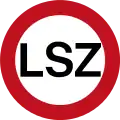 (RG-3) Limited Speed Zone (maximum speed limit of 100 km/h, reduces to 50 km/h during dangerous conditions such as bad weather)
(RG-3) Limited Speed Zone (maximum speed limit of 100 km/h, reduces to 50 km/h during dangerous conditions such as bad weather).svg.png.webp) (RP-3.4) Clearway During Prescribed Days
(RP-3.4) Clearway During Prescribed Days.svg.png.webp) (A40-1) No Exit
(A40-1) No Exit.svg.png.webp) Old version of No Exit (1960-1987)
Old version of No Exit (1960-1987).svg.png.webp) (A40-2) Left Turn At Any Time With Care
(A40-2) Left Turn At Any Time With Care.svg.png.webp) Old version of Warning Bells At Railway Crossing Turned Off at times prescribed (19??-1987)
Old version of Warning Bells At Railway Crossing Turned Off at times prescribed (19??-1987).svg.png.webp) (A41-3) Construction Zone (to the left)
(A41-3) Construction Zone (to the left).svg.png.webp) (A41-3) Construction Zone (to the right)
(A41-3) Construction Zone (to the right).svg.png.webp) (A41-4) Railway Not In Use
(A41-4) Railway Not In Use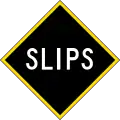 Slips (1975-1987) (warning of a landslide crossing or undercutting of the road)
Slips (1975-1987) (warning of a landslide crossing or undercutting of the road) (PW-29) Watch for pedestrians crossing
(PW-29) Watch for pedestrians crossing (PW-29.1) Watch for aged pedestrians
(PW-29.1) Watch for aged pedestrians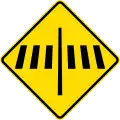 (PW-30) Crosswalk ahead
(PW-30) Crosswalk ahead (W16-4/PW-31) Watch for children crossing
(W16-4/PW-31) Watch for children crossing (PW-31.1) Kindergarten zone
(PW-31.1) Kindergarten zone (PW-32) School
(PW-32) School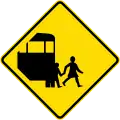 (PW-34) Watch for school buses
(PW-34) Watch for school buses (PW-34.1) School bus route
(PW-34.1) School bus route (PW-34.2) School bus turning area
(PW-34.2) School bus turning area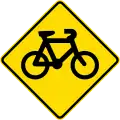 (PW-35) Watch for cyclists
(PW-35) Watch for cyclists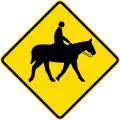 (PW-36) Watch for horses
(PW-36) Watch for horses.svg.png.webp) (PW-66) Curve marker with integrated advisory speed 35
(PW-66) Curve marker with integrated advisory speed 35.svg.png.webp) (PW-66) Curve marker with integrated advisory speed 35
(PW-66) Curve marker with integrated advisory speed 35.svg.png.webp) (PW-66) Curve marker with integrated advisory speed 35
(PW-66) Curve marker with integrated advisory speed 35.svg.png.webp) (PW-66) Curve marker with integrated advisory speed 35
(PW-66) Curve marker with integrated advisory speed 35.svg.png.webp) (PW-67) Curve marker left
(PW-67) Curve marker left.svg.png.webp) (PW-67) Curve marker right
(PW-67) Curve marker right
Combo signs
_%252B_R1-8.svg.png.webp) Temporary 10 km/h speed limit
Temporary 10 km/h speed limit_%252B_R1-8.svg.png.webp) Temporary 20 km/h speed limit
Temporary 20 km/h speed limit_%252B_R1-8.svg.png.webp) Temporary 30 km/h speed limit
Temporary 30 km/h speed limit_%252B_R1-8.svg.png.webp) Temporary 40 km/h speed limit
Temporary 40 km/h speed limit_%252B_R1-8.svg.png.webp) Temporary 50 km/h speed limit
Temporary 50 km/h speed limit_%252B_R1-8.svg.png.webp) Temporary 60 km/h speed limit
Temporary 60 km/h speed limit_%252B_R1-8.svg.png.webp) Temporary 70 km/h speed limit
Temporary 70 km/h speed limit_%252B_R1-8.svg.png.webp) Temporary 80 km/h speed limit
Temporary 80 km/h speed limit_%252B_R1-8.1.svg.png.webp) Temporary 10 km/h speed limit
Temporary 10 km/h speed limit_%252B_R1-8.1.svg.png.webp) Temporary 20 km/h speed limit
Temporary 20 km/h speed limit_%252B_R1-8.1.svg.png.webp) Temporary 30 km/h speed limit
Temporary 30 km/h speed limit_%252B_R1-8.1.svg.png.webp) Temporary 40 km/h speed limit
Temporary 40 km/h speed limit_%252B_R1-8.1.svg.png.webp) Temporary 50 km/h speed limit
Temporary 50 km/h speed limit_%252B_R1-8.1.svg.png.webp) Temporary 60 km/h speed limit
Temporary 60 km/h speed limit_%252B_R1-8.1.svg.png.webp) Temporary 70 km/h speed limit
Temporary 70 km/h speed limit_%252B_R1-8.1.svg.png.webp) Temporary 80 km/h speed limit
Temporary 80 km/h speed limit Give way - Straight ahead traffic
Give way - Straight ahead traffic Give way - Right turning traffic
Give way - Right turning traffic Give way - Left turning traffic
Give way - Left turning traffic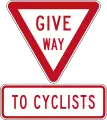 Give way to Cyclists
Give way to Cyclists Give way to Cyclists and Pedestrians
Give way to Cyclists and Pedestrians Give Way to Oncoming Vehicles (used at traffic bottleneck points)
Give Way to Oncoming Vehicles (used at traffic bottleneck points) No Entry - Except Buses (do not enter from this point)
No Entry - Except Buses (do not enter from this point) No Entry - Except Cycles (do not enter from this point)
No Entry - Except Cycles (do not enter from this point) No Entry - Except Authorised Vehicles (do not enter from this point)
No Entry - Except Authorised Vehicles (do not enter from this point).svg.png.webp) No Entry - Except Buses or Cycles (do not enter from this point)
No Entry - Except Buses or Cycles (do not enter from this point) No Stopping (on the left of this sign)
No Stopping (on the left of this sign) No Stopping (on the right of this sign)
No Stopping (on the right of this sign) No Stopping (on both sides of this sign)
No Stopping (on both sides of this sign).svg.png.webp) No Stopping for 1 kilometre
No Stopping for 1 kilometre.svg.png.webp) No Stopping for 2 kilometres
No Stopping for 2 kilometres.svg.png.webp) No Stopping for 3 kilometres
No Stopping for 3 kilometres.svg.png.webp) No Stopping for 4 kilometres
No Stopping for 4 kilometres.svg.png.webp) No Stopping for 5 kilometres
No Stopping for 5 kilometres.svg.png.webp) No Stopping at times prescribed (on both sides of this sign, includes a late night extension)
No Stopping at times prescribed (on both sides of this sign, includes a late night extension).svg.png.webp) No Stopping at times prescribed (on both sides of this sign, includes a late night extension)
No Stopping at times prescribed (on both sides of this sign, includes a late night extension).svg.png.webp) No Stopping at times prescribed (on both sides of this sign, includes a late night extension)
No Stopping at times prescribed (on both sides of this sign, includes a late night extension).svg.png.webp) Loading Zone Parking: 5 Minutes (goods vehicles only)
Loading Zone Parking: 5 Minutes (goods vehicles only).svg.png.webp) Loading Zone Parking: 5 Minutes (on the left of this sign; goods vehicles only)
Loading Zone Parking: 5 Minutes (on the left of this sign; goods vehicles only).svg.png.webp) Loading Zone Parking: 5 Minutes (on the right of this sign; goods vehicles only)
Loading Zone Parking: 5 Minutes (on the right of this sign; goods vehicles only).svg.png.webp) Loading Zone Parking: 5 Minutes (on both sides of this sign; goods vehicles only)
Loading Zone Parking: 5 Minutes (on both sides of this sign; goods vehicles only).svg.png.webp) Loading Zone Parking: 5 Minutes (Maximum of 5 minutes to be strictly observed; goods vehicles only)
Loading Zone Parking: 5 Minutes (Maximum of 5 minutes to be strictly observed; goods vehicles only).svg.png.webp) Loading Zone Parking: 5 Minutes (on the left of this sign; Maximum of 5 minutes to be strictly observed; goods vehicles only)
Loading Zone Parking: 5 Minutes (on the left of this sign; Maximum of 5 minutes to be strictly observed; goods vehicles only).svg.png.webp) Loading Zone Parking: 5 Minutes (on the right of this sign; Maximum of 5 minutes to be strictly observed; goods vehicles only)
Loading Zone Parking: 5 Minutes (on the right of this sign; Maximum of 5 minutes to be strictly observed; goods vehicles only).svg.png.webp) Loading Zone Parking: 5 Minutes (on both sides of this sign; Maximum of 5 minutes to be strictly observed; goods vehicles only)
Loading Zone Parking: 5 Minutes (on both sides of this sign; Maximum of 5 minutes to be strictly observed; goods vehicles only)
Obsolete combo signs
_%252B_R1-8_(1987%E2%80%932016).svg.png.webp) Temporary 10 km/h speed limit
Temporary 10 km/h speed limit_%252B_R1-8_(1987%E2%80%932016).svg.png.webp) Temporary 20 km/h speed limit
Temporary 20 km/h speed limit_%252B_R1-8_(1987%E2%80%932016).svg.png.webp) Temporary 30 km/h speed limit
Temporary 30 km/h speed limit_%252B_R1-8_(1987%E2%80%932016).svg.png.webp) Temporary 40 km/h speed limit
Temporary 40 km/h speed limit_%252B_R1-8_(1987%E2%80%932016).svg.png.webp) Temporary 50 km/h speed limit
Temporary 50 km/h speed limit_%252B_R1-8_(1987%E2%80%932016).svg.png.webp) Temporary 60 km/h speed limit
Temporary 60 km/h speed limit_%252B_R1-8_(1987%E2%80%932016).svg.png.webp) Temporary 70 km/h speed limit
Temporary 70 km/h speed limit_%252B_R1-8_(1987%E2%80%932016).svg.png.webp) Temporary 80 km/h speed limit
Temporary 80 km/h speed limit_%252B_R1-8.1_(1987%E2%80%932016).svg.png.webp) Temporary 10 km/h speed limit
Temporary 10 km/h speed limit_%252B_R1-8.1_(1987%E2%80%932016).svg.png.webp) Temporary 20 km/h speed limit
Temporary 20 km/h speed limit_%252B_R1-8.1_(1987%E2%80%932016).svg.png.webp) Temporary 30 km/h speed limit
Temporary 30 km/h speed limit_%252B_R1-8.1_(1987%E2%80%932016).svg.png.webp) Temporary 40 km/h speed limit
Temporary 40 km/h speed limit_%252B_R1-8.1_(1987%E2%80%932016).svg.png.webp) Temporary 50 km/h speed limit
Temporary 50 km/h speed limit_%252B_R1-8.1_(1987%E2%80%932016).svg.png.webp) Temporary 60 km/h speed limit
Temporary 60 km/h speed limit_%252B_R1-8.1_(1987%E2%80%932016).svg.png.webp) Temporary 70 km/h speed limit
Temporary 70 km/h speed limit_%252B_R1-8.1_(1987%E2%80%932016).svg.png.webp) Temporary 80 km/h speed limit
Temporary 80 km/h speed limit.svg.png.webp) Give Way at Roundabout (give way to vehicles coming from the right)
Give Way at Roundabout (give way to vehicles coming from the right).svg.png.webp) Give Way at Roundabout (give way to vehicles coming from the right)
Give Way at Roundabout (give way to vehicles coming from the right).svg.png.webp) Give Way to Oncoming Vehicles (used at traffic bottleneck points)
Give Way to Oncoming Vehicles (used at traffic bottleneck points).svg.png.webp) No Entry - Except Buses (do not enter from this point)
No Entry - Except Buses (do not enter from this point).svg.png.webp) No Entry - Except Cycles (do not enter from this point)
No Entry - Except Cycles (do not enter from this point).svg.png.webp) No Entry - Except Authorised Vehicles (do not enter from this point)
No Entry - Except Authorised Vehicles (do not enter from this point)_(obsolete).svg.png.webp) No Entry - Except Buses or Cycles (do not enter from this point)
No Entry - Except Buses or Cycles (do not enter from this point).svg.png.webp) No Stopping (on the left of this sign)
No Stopping (on the left of this sign).svg.png.webp) No Stopping (on the right of this sign)
No Stopping (on the right of this sign).svg.png.webp) No Stopping (on both sides of this sign)
No Stopping (on both sides of this sign).svg.png.webp) No Stopping at times prescribed (on left side of this sign, includes a late night extension)
No Stopping at times prescribed (on left side of this sign, includes a late night extension).svg.png.webp) No Stopping at times prescribed (on right side of this sign, includes a late night extension)
No Stopping at times prescribed (on right side of this sign, includes a late night extension).svg.png.webp) No Stopping at times prescribed (on both sides of this sign, includes a late night extension)
No Stopping at times prescribed (on both sides of this sign, includes a late night extension).svg.png.webp) Loading Zone Parking: 5 Minutes (goods vehicles only)
Loading Zone Parking: 5 Minutes (goods vehicles only).svg.png.webp) Loading Zone Parking: 5 Minutes (on the left of this sign; goods vehicles only)
Loading Zone Parking: 5 Minutes (on the left of this sign; goods vehicles only).svg.png.webp) Loading Zone Parking: 5 Minutes (on the right of this sign; goods vehicles only)
Loading Zone Parking: 5 Minutes (on the right of this sign; goods vehicles only).svg.png.webp) Loading Zone Parking: 5 Minutes (on both sides of this sign; goods vehicles only)
Loading Zone Parking: 5 Minutes (on both sides of this sign; goods vehicles only).svg.png.webp) Loading Zone Parking: 5 Minutes (Maximum of 5 minutes to be strictly observed; goods vehicles only)
Loading Zone Parking: 5 Minutes (Maximum of 5 minutes to be strictly observed; goods vehicles only).svg.png.webp) Loading Zone Parking: 5 Minutes (on the left of this sign; Maximum of 5 minutes to be strictly observed; goods vehicles only)
Loading Zone Parking: 5 Minutes (on the left of this sign; Maximum of 5 minutes to be strictly observed; goods vehicles only).svg.png.webp) Loading Zone Parking: 5 Minutes (on the right of this sign; Maximum of 5 minutes to be strictly observed; goods vehicles only)
Loading Zone Parking: 5 Minutes (on the right of this sign; Maximum of 5 minutes to be strictly observed; goods vehicles only).svg.png.webp) Loading Zone Parking: 5 Minutes (on both sides of this sign; Maximum of 5 minutes to be strictly observed; goods vehicles only)
Loading Zone Parking: 5 Minutes (on both sides of this sign; Maximum of 5 minutes to be strictly observed; goods vehicles only)
Location Referencing Management System (LRMS)
The NZ Transport Agency (NZTA; Māori: Waka Kotahi) uses a linear location referencing system for its State Highway network, nationwide.[3] This assists roading contractors, safety auditors and emergency services in pin-pointing locations across the country. The LRMS features several types of signs and methods of reference. All KMP's are installed using a calibrated Trip Meter from the beginning of the road. ERP's however, are placed using land surveying equipment.
All LRMS signs are installed on the 'true left' side of the lane or carriageway, this is determined by the left hand side when facing the increasing direction, The increasing direction of travel is the direction in which positive measurements are made. Divided carriageways (roads with concrete berms or centrelines) have an Increasing (I) side and a Decreasing (D) side. This can be seen on LRMS signs in these areas.
Established Route Position (ERP)
Established Route Position signs are used to highlight a special location or bearing on the highway, These are placed routinely along the carriageways, usually every 3km. They feature the current Reference Station and the number of kilometres from the beginning of that Reference Station. These are required by the NZTA to have an accuracy of less than 3 metres. ERP signs are double-sided and feature a reflective green strip. They also have a small yellow triangle on the post pointing in the roads increasing direction.
Kilometre Marker Post (KMP)
Kilometre Marker Post signs are used to highlight the progression along the highway, These are placed routinely along the carriageways, every 1000 metres. They feature the State Highway Shield, the current Reference Station and the number of kilometres from the beginning of that Reference Station. These are required by the NZTA to have an accuracy of less than 100 metres. KMP signs are on plastic, flexible posts. They are double-sided and feature a reflective black strip.
Reference Station (RS)
Reference Station signs are placed at the change of a Reference Station, or beginning of a Highway. KMP and ERP signs are reset to zero at the beginning of each RS.
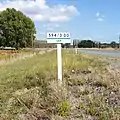 ERP Sign (SH1, Route Station 594, 3km)
ERP Sign (SH1, Route Station 594, 3km)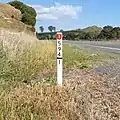 KMP Sign (SH1, Route Station 594, 1km)
KMP Sign (SH1, Route Station 594, 1km)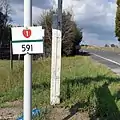 RS Sign (SH1, Route Station 591)
RS Sign (SH1, Route Station 591)
See also
References
- Traffic Control Devices Manual. New Zealand Transport Agency. Retrieved 2012-07-15.
- Charlton, S.G.; de Pont, J.J. (2007). Curve Speed Management (PDF). Land Transport New Zealand Research Report 323. Wellington: Land Transport New Zealand. p. 22. ISBN 0-478-28735-6. Retrieved 26 September 2013.
- https://www.nzta.govt.nz/assets/resources/location-ref-management-sys-manual/docs/SM051-part-b.pdf New Zealand Transport Agency LRMS Manual SM051 Retrieved 18-03-2019